Are you wondering how SEO success stories happened and generated tens and hundreds of thousands of organic users within a short period of time?
The secret, well-planned, and executed SEO strategy. And in this article, I am going to teach you how you can do that too!
In fact, I have used this exact SEO Strategy process to generate 6 figures in revenue and 7 figures in opportunities for my client within just one year, during MCO.
So, if you want to learn how to boost your SEO results, then buckle up, because we are starting:
What is an SEO Strategy?
SEO Strategy is a systematic process of planning and executing an SEO plan, including a comprehensive link building plan, to increase website visibility in search, drive targeted organic traffic, and generate leads or sales depending on the type of business. This process includes several steps from keyword research and planning, organizing and creating content, implementing a link building plan, to measuring and monitoring your SEO results, which includes tracking your backlinks.
Why Do You Need an SEO Strategy?
SEO Strategy is a fundamental part of your SEO success and without planning your SEO strategy you are planning to fail, thanks, Benjamin!
Each and every day there are over 7,5 million blog posts published and this number is going to grow, and it doesn’t even include all the web pages created to target keywords.
This means, the competition is ever-growing, and you cannot just wing it anymore if you want to succeed with an SEO. That’s why you need an SEO strategy.
Also, if you have been inspired by some of the SEO success stories to start with SEO, then they did not happen by chance, but by meticulously planning and executing an SEO strategy plan.

Therefore, if you want to be generating thousands and millions in revenue and opportunities, bringing thousands of users to the website, and increasing brand awareness, then you need an SEO strategy.
And there are many more reasons, why SEO strategy is important, however, you have been using the internet, to learn, buy, discover and entertain yourself for a long-time so you understand and see how SEO is important.
And SEO Strategy helps you to get people to come to your website to learn, buy, discover and entrain themselves.
So, let me show you how:
How Do I Create an SEO Strategy?
Like with everything, so with an SEO, you need to know how things work, what comes first, second, and so on.
So here is a quick overview of my 7 steps SEO Strategy implementation plan that we will cover here:
- Start with keyword research
- Start producing SEO content
- Optimize your web pages for on-page SEO
- Launch your off-page SEO campaign
- Optimize your website for technical SEO
- Start tracking important SEO metrics
- SEO strategies to be continuously updated
Using this methodology helped me and my clients to drive an ever-growing amount of targeted traffic, leads, and revenue for a business.
So let’s break down each step, providing you with the best SEO strategies for every step.
Step #1: Start with Keyword Research
The first step of your SEO strategy should be keyword research so you can find the right SEO keywords in your niche to drive your target audience, generate more leads and/or sales from SEO.
Proper keyword research is essential for your SEO strategy as it hugely impacts your success with SEO including your content creation, on-page SEO, internal linking strategy, and even your link building strategy. Learn more about SEO domain cross linking.
And while I will not teach you how to do proper keyword research here again and all the techniques as it wouldn’t make much sense because you can watch my video here:
Or you can read my article.
However, I am going to give you four important SEO strategies that you should keep in mind when you do keyword research for your SEO strategy:
Strategy #1: Match Buyer Journey and Site Architecture
The first strategy when you are doing keyword research for your SEO strategy is to keep in mind you should create proper SEO site architecture, also called SEO silos, and match it with the buyer journey.
Website architecture helps both users and search engines to properly understand each and every page and what is the purpose of that page.
By properly organizing your content in the flat site architecture, search engines and users will see whether they landed on a category or product page or on your blog posts.

Now, what has site architecture to do with keyword research?
When you do keyword research for your SEO strategy you want to fundamentally find all SEO keywords within your industry for your:
- Product Pages
- Service Pages
- Solution Pages
- Blog Posts
The reason why is because you want to target keywords across all stages of a buyer journey so you can drive users to the TOFU, MOFU, and BOFU stages of the buyer journey.

This means your product and service pages should target keywords at the bottom of the funnel to drive high-quality leads, your solution pages should target keywords at the middle of the funnel to move potential prospects to the BOFU stage and your blog posts target keywords at the top of the funnel as well as other stages to move users down to your SEO funnels and generate leads or sales.

Therefore, when you are doing keyword research, you should keep in mind your SEO site architecture and the buyer journey so you can drive users across all stages of the buyer journey and drive maximum impact from your SEO strategy.
Strategy #2: Create Topic Clusters Based on Your Seed Keywords
The second strategy that is related to the first strategy is to create topic clusters based on your relevant seed keywords.
Seed keywords are typically category and niche-related keywords with general meaning used during the keyword research processes to find a large number of related keywords.
Think of seed keywords as your main topics.
For example, such keywords or topics could be “content marketing”, “SEO”, “electric cars”, “computer mouse”, etc.
And topic clusters are based on seed keywords, where you want to find as many keywords under the seed keywords or as many subtopics under your main topic.
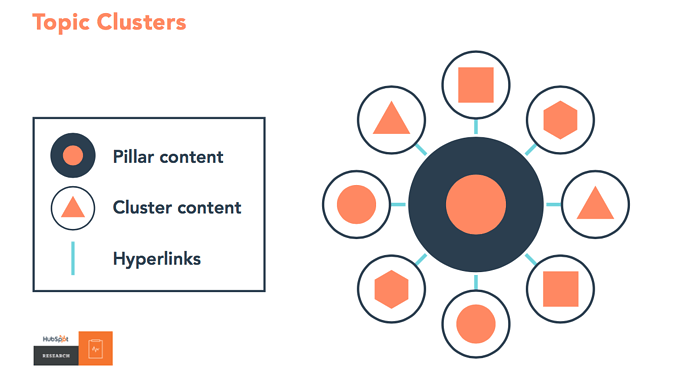
For example, let’s say I am creating a topic cluster for the topic/seed keyword “content marketing”. So, I take the seed keyword and toss it in the SE Ranking keyword research tool.
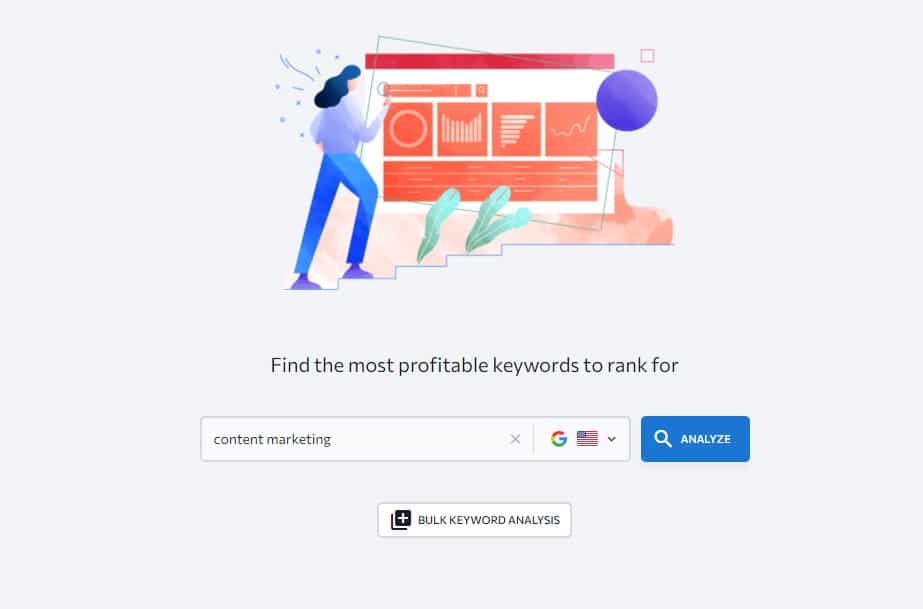
Then I will go to the “Keyword Suggestions” report where I will collect all the keywords, that are considered as subtopics to my main analyzed seed keyword which means these keywords can be targeted with an individual page.

So, after collecting a few keywords, you can see, the topic cluster is starting to formulate, where in the middle is the main topic, our seed keyword, and then subtopics or related keywords around.
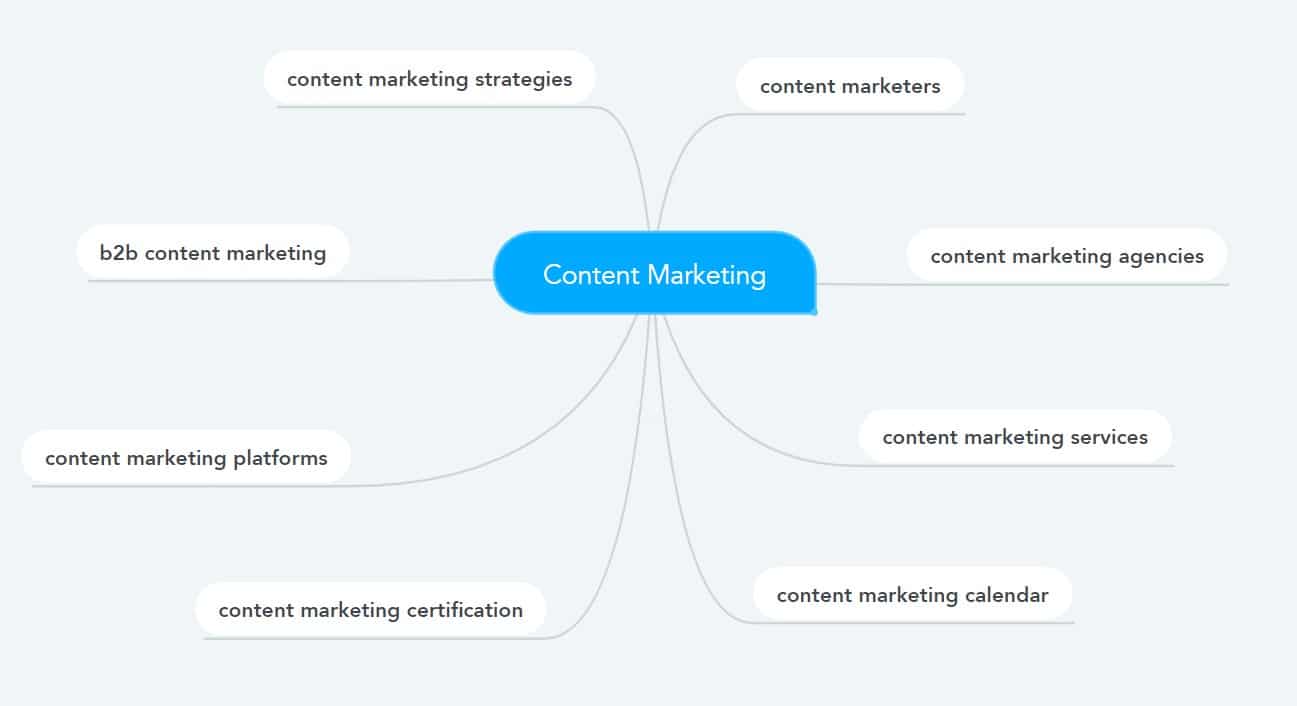
(I am using MindMeister to create topic clusters visual map)
And just like this, you want to find the most relevant seed keyword to your niche and keywords, then target them, and then move on to the next topic cluster.
And the reason why you want to focus on creating topic clusters instead of just blindly targeting keywords in your niche is that you want to establish topical relevance in your niche.
The more keywords you are targeting around your targeted seed keyword/topic the more you grow your topical authority in the niche and the more Google will see you as a go-to source for the topic.

This means you will improve your ranking across all your keywords in your topic cluster and ultimately drive the highest quality traffic that has a high potential to convert as leads or sales on your website.

This means you are owning the topic in the SERP, and you are the authority in the niche.
Remember, to win in search, you need to focus on Semantic SEO, which means, you want to have specific targeting just like a subject matter expert. You don’t want to become master of none.
Strategy #3: Proportion of Informational vs Commercial Keywords
Another strategy I have for you when you do keyword research is to focus on a higher ratio of targeting informational keywords than commercials also knowns as profitable keywords.
This is one of the biggest keyword research mistakes I am seeing mostly with affiliate sites, however, even company websites fall for the same mistake.
A lot of SEOs and website owners think, that when they focus only on targeting keywords at the bottom, the more money they will make, thus targeting keywords at the TOFU stage is not their priority.
However, since Google Core Web Vitals and Google E-A-T score updates Google highly penalized those sites that mainly focused on targeting commercial keywords and skipped the information keywords, to maximize the earnings.

Basically, they are searching for quality content with a satisfying amount of information on your website in both commercial and informational value.
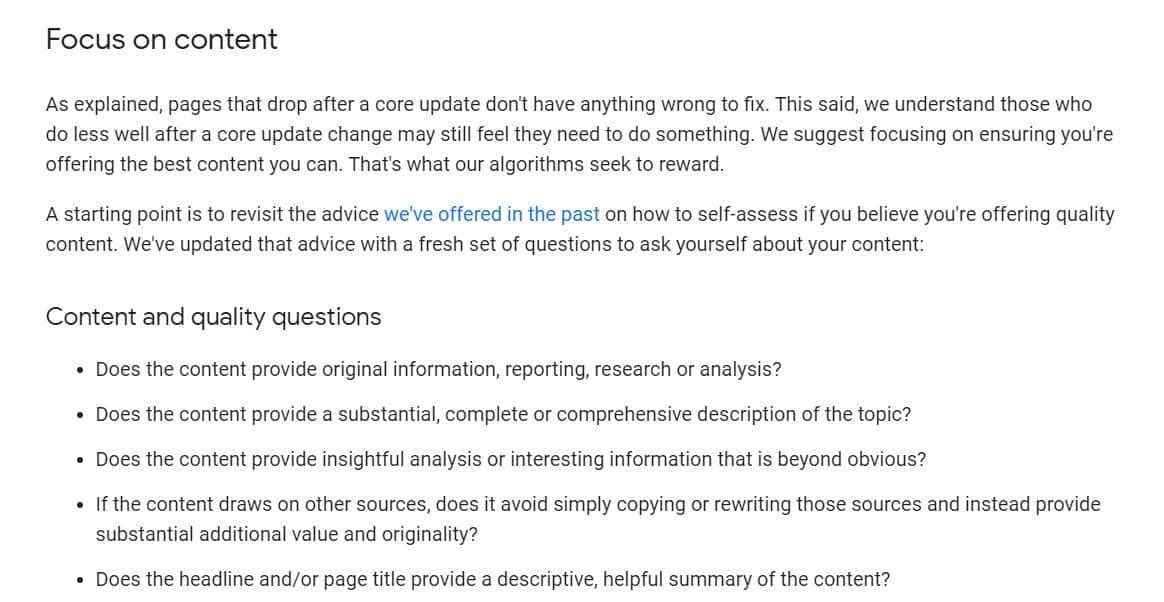
So, Google is looking at the amount of information you are providing, the ratio of your information content like “what is SEO”, “why do you need SEO”, or “best SEO strategies” with the commercial content like “best SEO tools”, “best keyword research tools”, “SE Ranking review”, “Tool A vs Tool B”, etc.
And if you provide mostly commercial content, then it clearly shows you are in the game only for the money and you don’t really care about helping people by providing valuable information.
On top of that, Google also released a Product Reviews update, that is specifically aimed at promotional content and how good it is and should be.
With that being said, you should be targeting both types of keywords, commercial and informational with a ratio of 80% informational and 20% commercial keywords so you can establish yourself as a subject matter expert, that can educate and recommend as well.
Strategy #4: Perform Content Gap Analysis
And the last keyword research strategy I have for you, when you are preparing an SEO strategy is to conduct content gap analysis or also known as keyword gap analysis.
This is an extremely powerful keyword research technique and one of my favorites to find hidden keyword gems on competitor websites.
Basically, you are comparing your ranking keywords with your competitors ranking keywords to find missing keywords that you should be targeting.
Let me show you how it works:
Step #1: Find your competitors.
To do that, you can use SE Ranking competitive research, pop your domain there, select your location and click on “Analyze”.
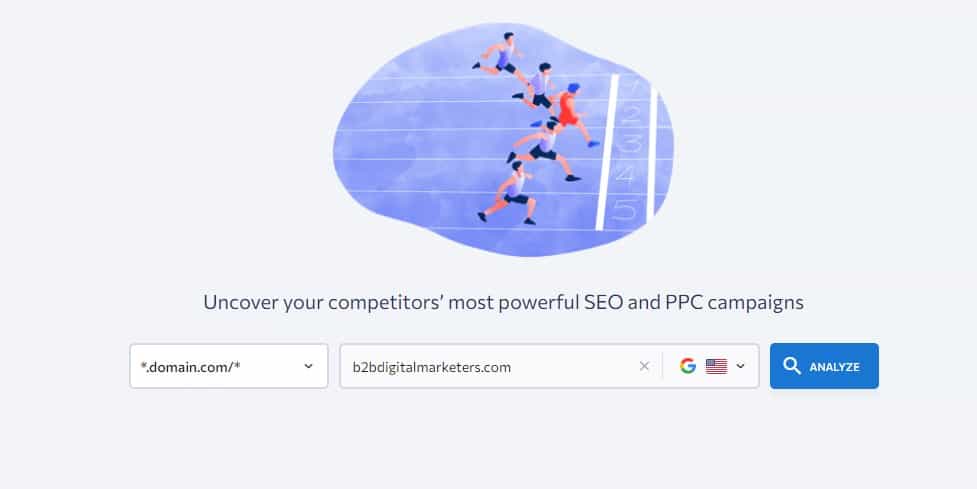
Then you will go to the “Competitors” report in the “Organic Traffic Research” section, where you will get hundreds of your close competitors based on your ranking keywords.
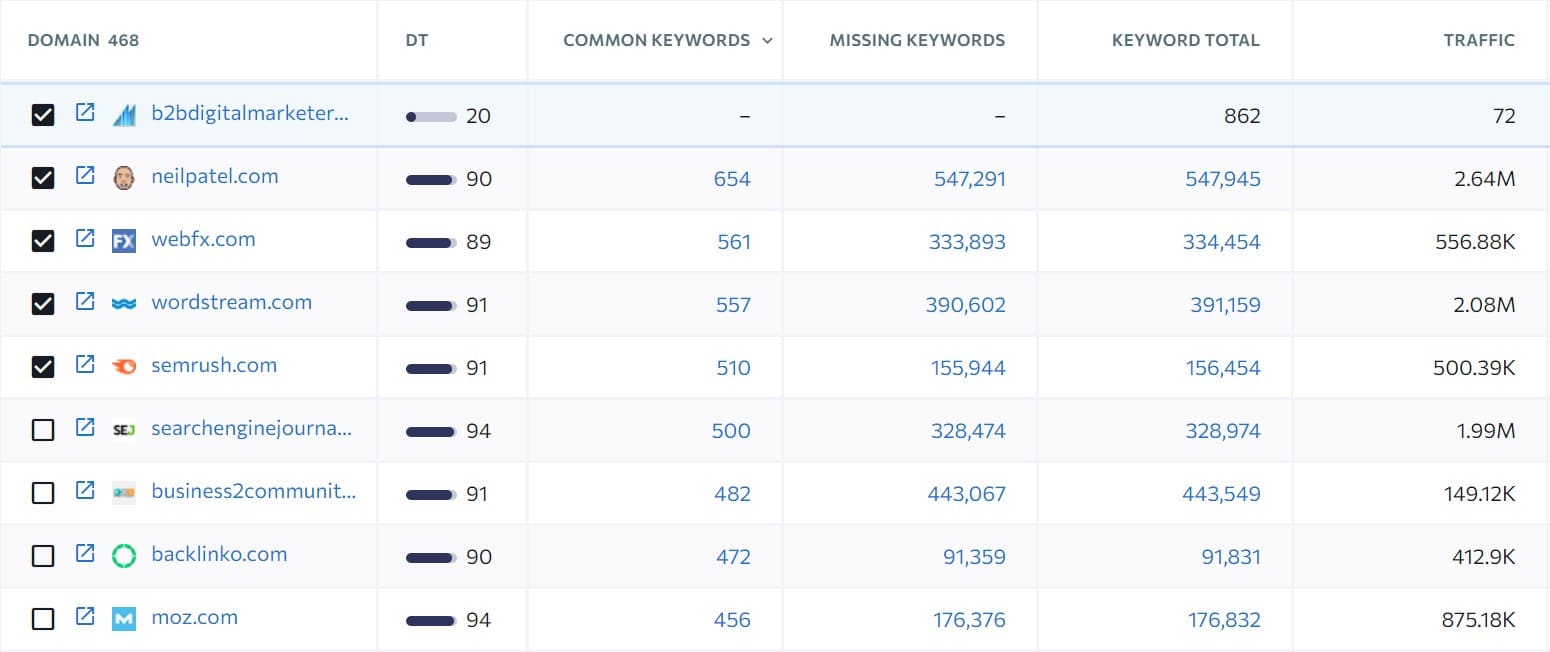
Step #2: Select Your Close Competitors.
Now, you only need to select the right competitor based on their ranking keywords. Obviously, you want to find a competitor that is ranking for keywords you are targeting.
Step #3: Analyze Missing and Unique Keywords.
And once you find the right close competitor, then you can run the “Competitor Comparison” report and select the “Missing” or “Unique” tab to get all the keywords your competitor is ranking for, but you don’t.
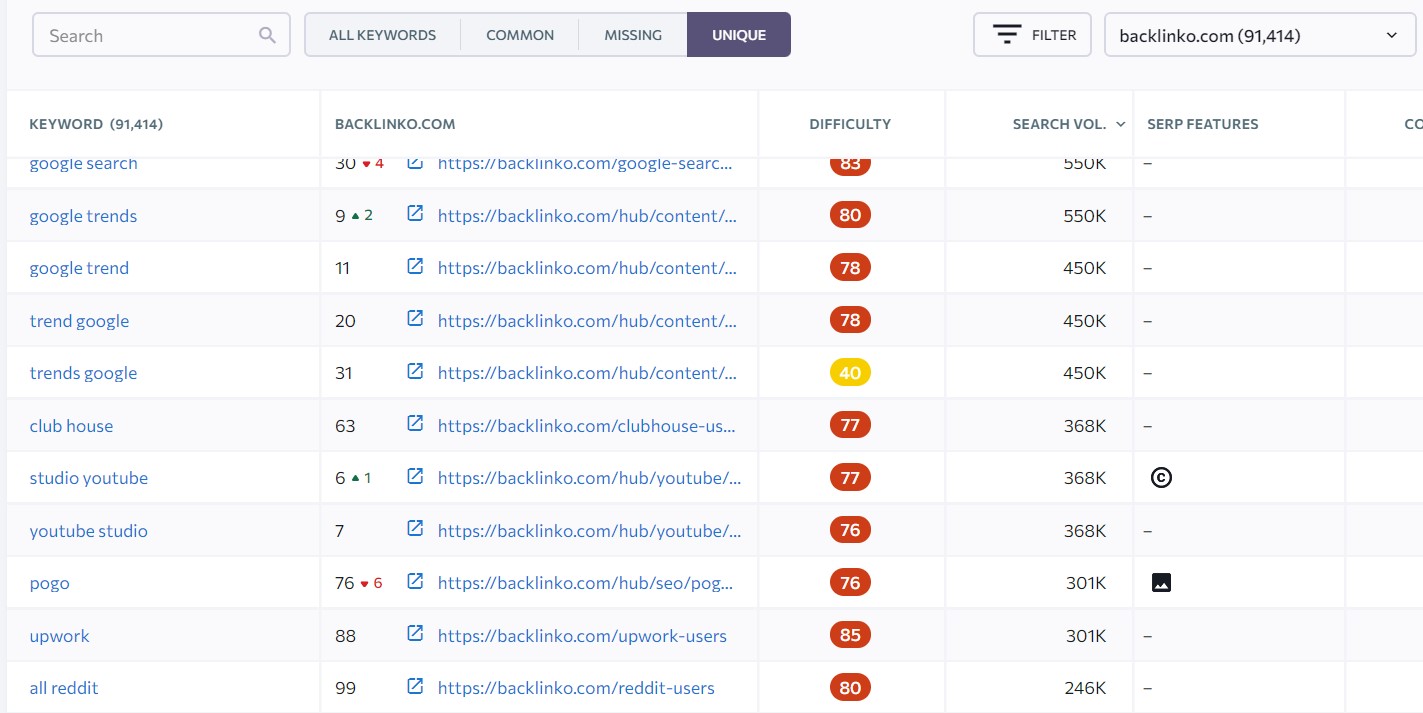
And just like this you can generate some great high-quality keywords with minimum effort and let your competitors do the heavy lifting of researching and analyzing the market.
And this strategy is also perfect for guest posting, to find keywords on a website where you want to post your guest post.
Step #2: Start Producing SEO Content
The second step is to start producing SEO content on your website once you have a list of the keywords that you want to target.
Content is a key element in the SEO strategy, you cannot simply create an effective SEO strategy without content as with content you are targeting the keywords you have found and attracting your target audience.
Creating SEO content helps you to turn your ideas, experiences, and your keywords into material that will get discovered, crawl and ranked by search engines, and ultimately you will be able to provide value to your users by creating content that they are looking for AKA matching the searcher intent.
And whenever you listen, watch, or read how to improve SEO, ranking, and organic traffic from Google, they will always tell you to focus on creating high-quality content and it is the first thing recommended by Google to do.
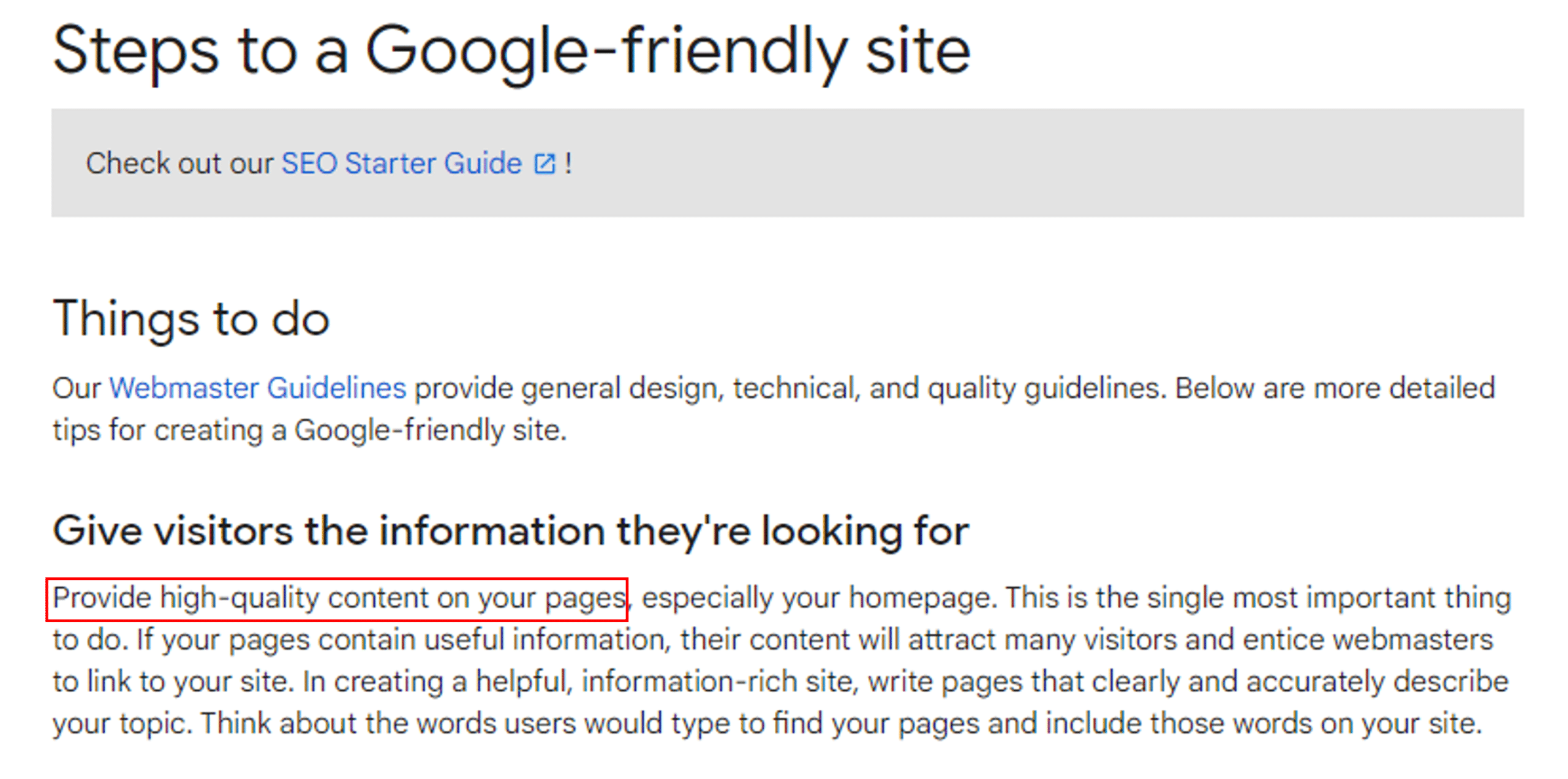
And content is considered as one of the most important ranking factors nor the most important ranking factor in the SEO game.
However, when it comes to creating SEO content, there are many things you should consider, therefore if you want to learn how to create SEO Content, you can watch my video here:
Or read my article. However, let me share with you another four important SEO strategies when you are creating SEO content for your SEO strategy:
Strategy #5: Focus on Semantic SEO
So, the first tip I have for you when you are creating SEO content is to focus on Semantic SEO.
Semantic SEO helps you to improve the way how you are producing content. Instead of just focusing on keywords you will be focusing on topics and subtopics you want to rank for, just like I showed you with the topic cluster model.
However semantic SEO goes much deeper and focuses on providing all the answers users may have related to the topic. The goal is to connect and organize all terms, entities, facts, and information to each other to relevancy and the searcher’s intent in the niche.
For example, in the SEO niche, there are many terms, entities, and facts and by creating and connecting content that addresses all the terms, entities, and facts in the SEO niche, Google starts seeing you as an authoritative site in the niche.
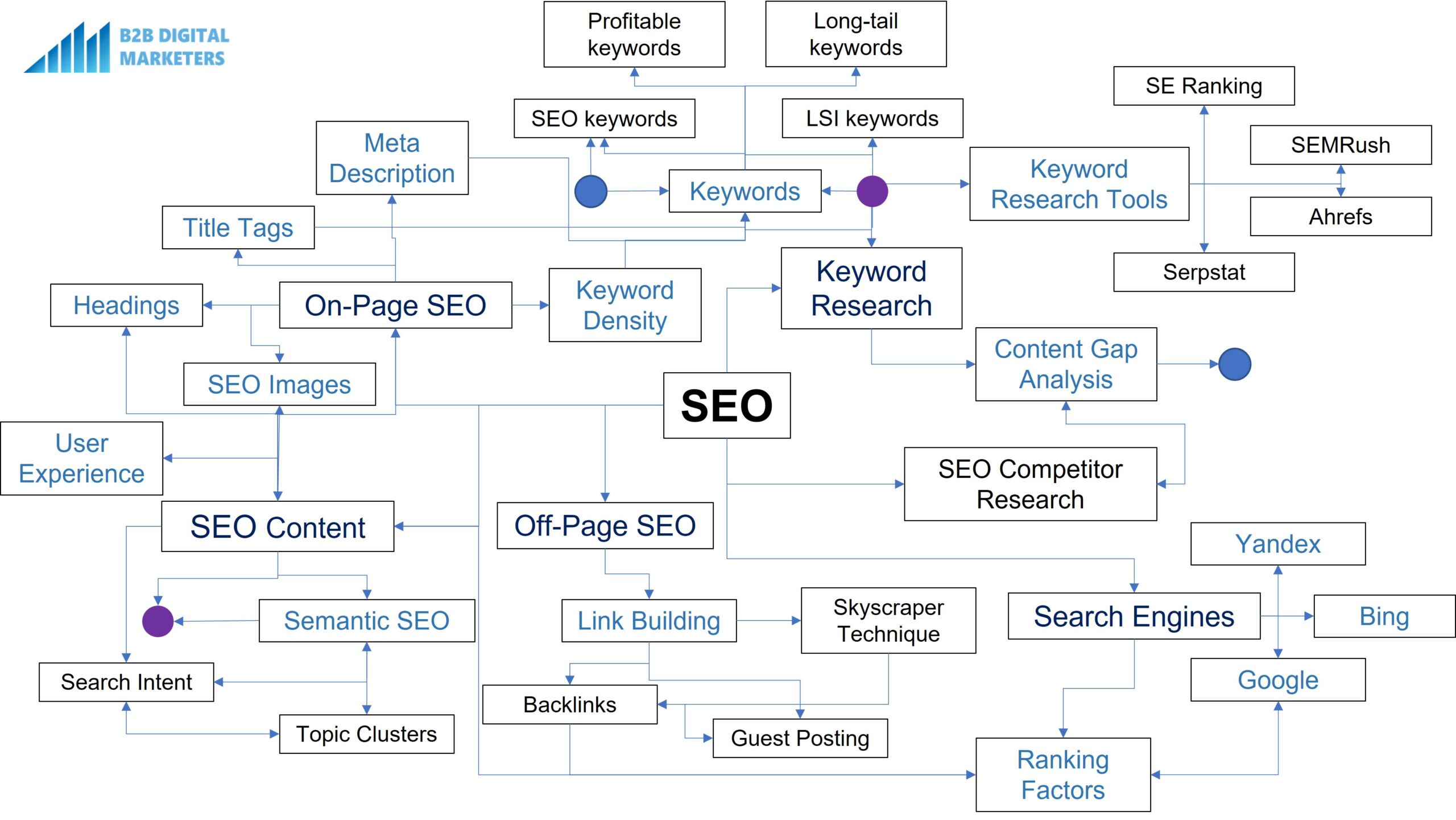
And I barely scratch the surface of all the things there are to SEO. However, your goal is to connect all the dots and bits so the user can find any information within your field of expertise.
Unlike from Topic Clusters, you are not focusing on subtopics with the seed keyword in it, but you are addressing every corner, every keyword, topic, and subtopic that is related to the overall topic or the niche.
In conclusion, Semantic SEO is about addressing all the questions and needs within your topic, and the higher percentage of users’ questions and needs within your topic you address with your content, the more authoritative website you become within the topic and can outrank those with a smaller percentage.
Strategy #6: Understand the Search Intent
The second SEO strategy I have for you when you are creating content and probably the most important is to understand the searcher’s intent and create content to match it.
Search intent means the reason behind the searcher query and what content the user wants when they are typing a certain keyword. For example, if you are searching for “cheap toy cars”, then you would expect to get a list of e-commerce category pages with cheap toy cars.
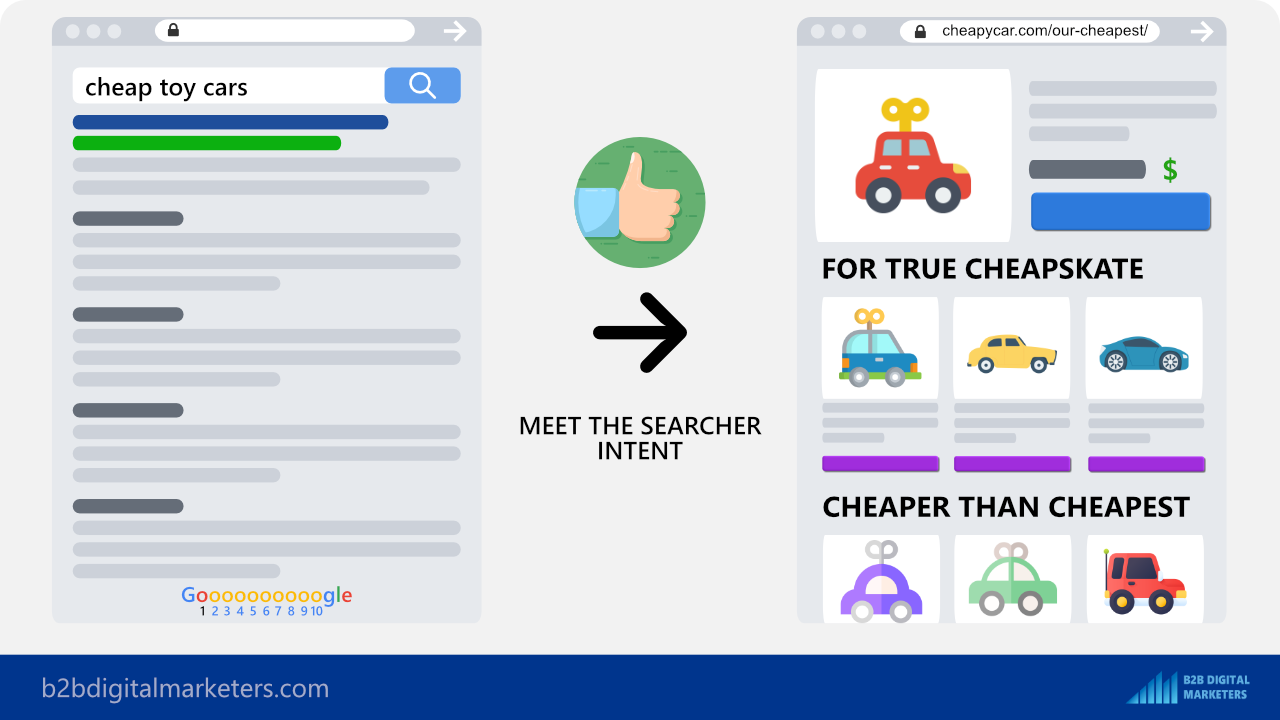
However, if you would create a product page with a high-end premium toy car for children to target the keyword, then users searching for the keyword “cheap toy cars” would quickly disappear and your page would end up on Google’s page ten or become goner.
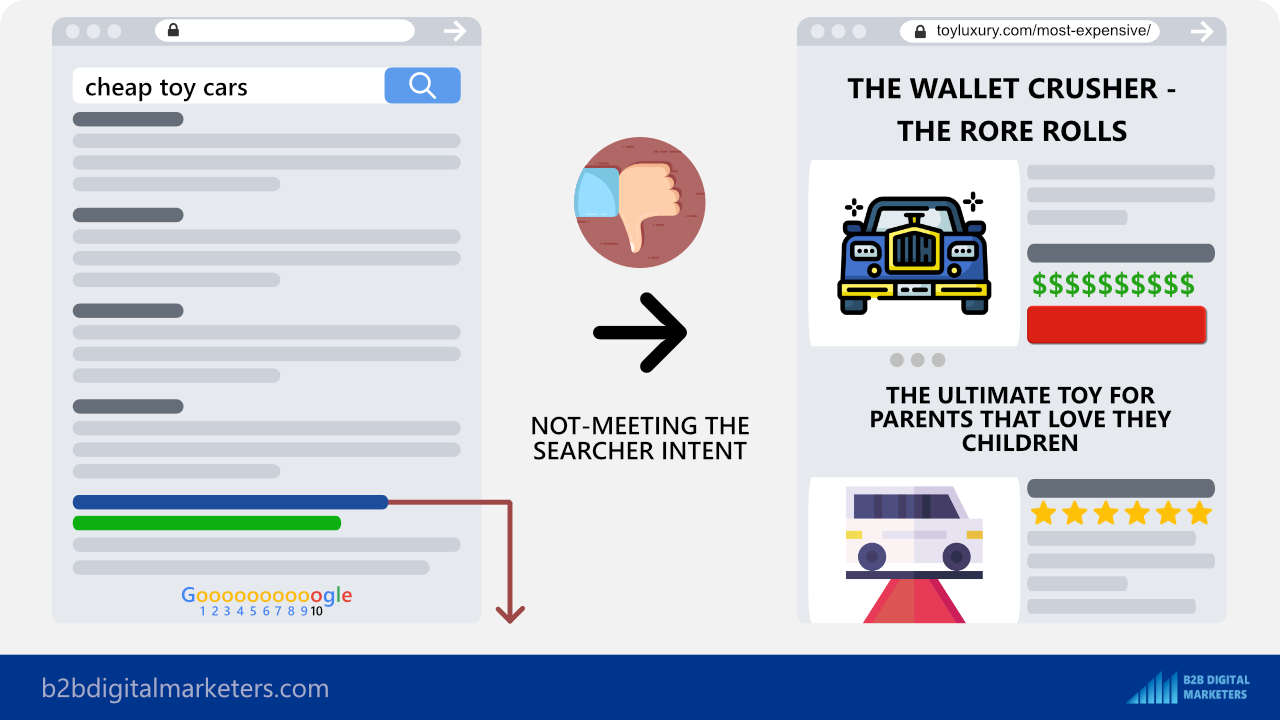
Therefore, this is essential information for you, as you need to match the searcher’s intent with your content to rank in SERPs.
So, to begin with, 99% of keywords will generally fall under these 4 types of searcher intent:
- Informational
- Navigational
- Commercial
- Transactional

And to find the searcher intent is not difficult at all as all the answers lay in Google’s search engine result pages. So, to start, I recommend you use keyword research tools like SE Ranking as you can get precise search results for your targeted location without personalization.
Example: Let’s say I want to target the keyword “seo strategies”.
So, I take the keyword, pop it into the keyword research tool, and enter my targeted location.
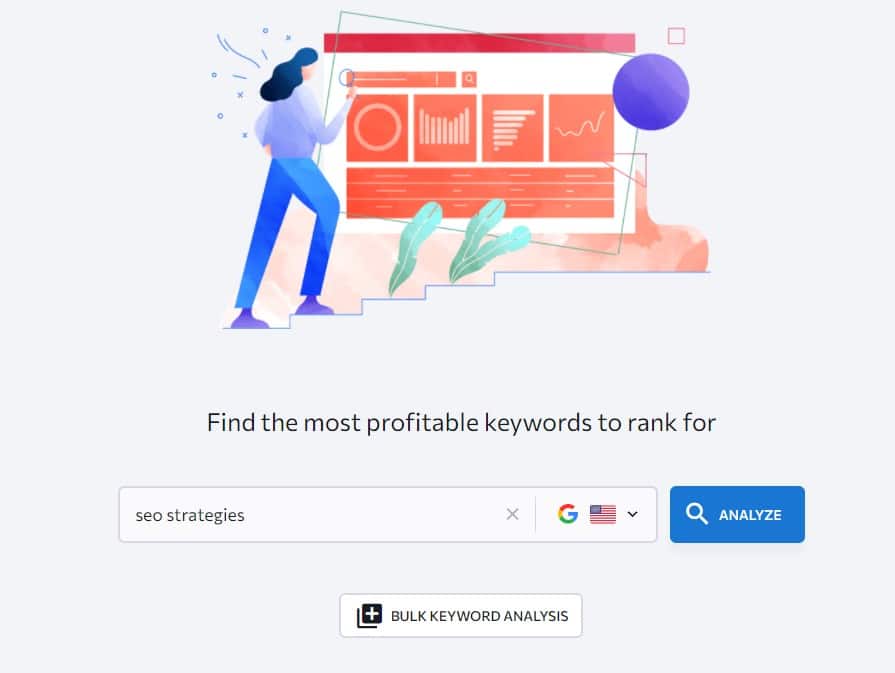
Then I go to the “Organic Results” report to see all the ranking pages of my competitors and their ranking movement.
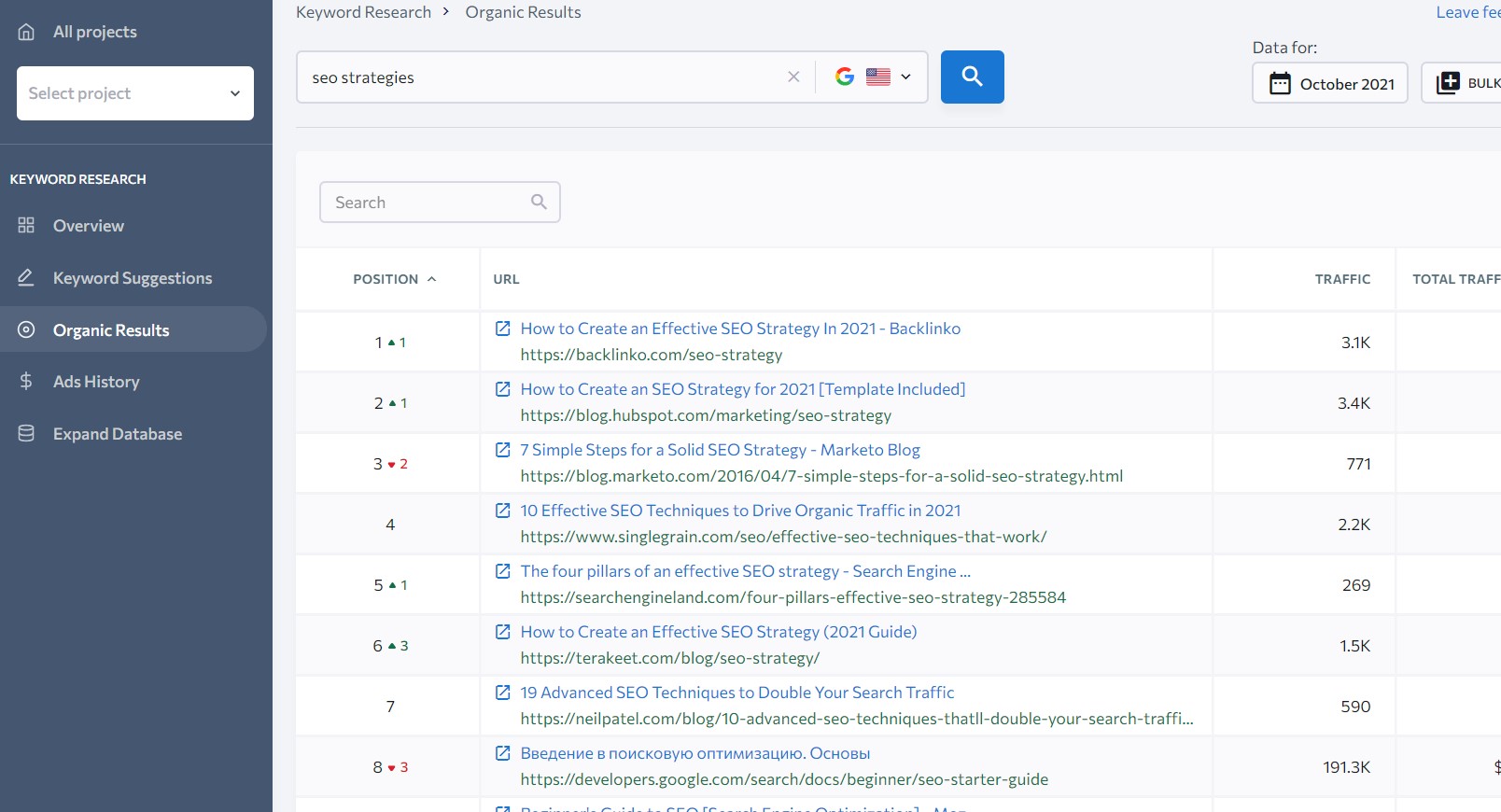
The first thing I want to look at is what type of searcher intent it is. This keyword is obviously information type, as the pages are all blog posts, which means I will have to create a blog post as a content type.
Then, for the content angle, I am seeing, that I will have to create a “step-by-step” tutorial.

However, based on the results I can see that the keyword “seo strategies” is more LSI keyword or supplementary keyword to the primary keyword “seo strategy”.
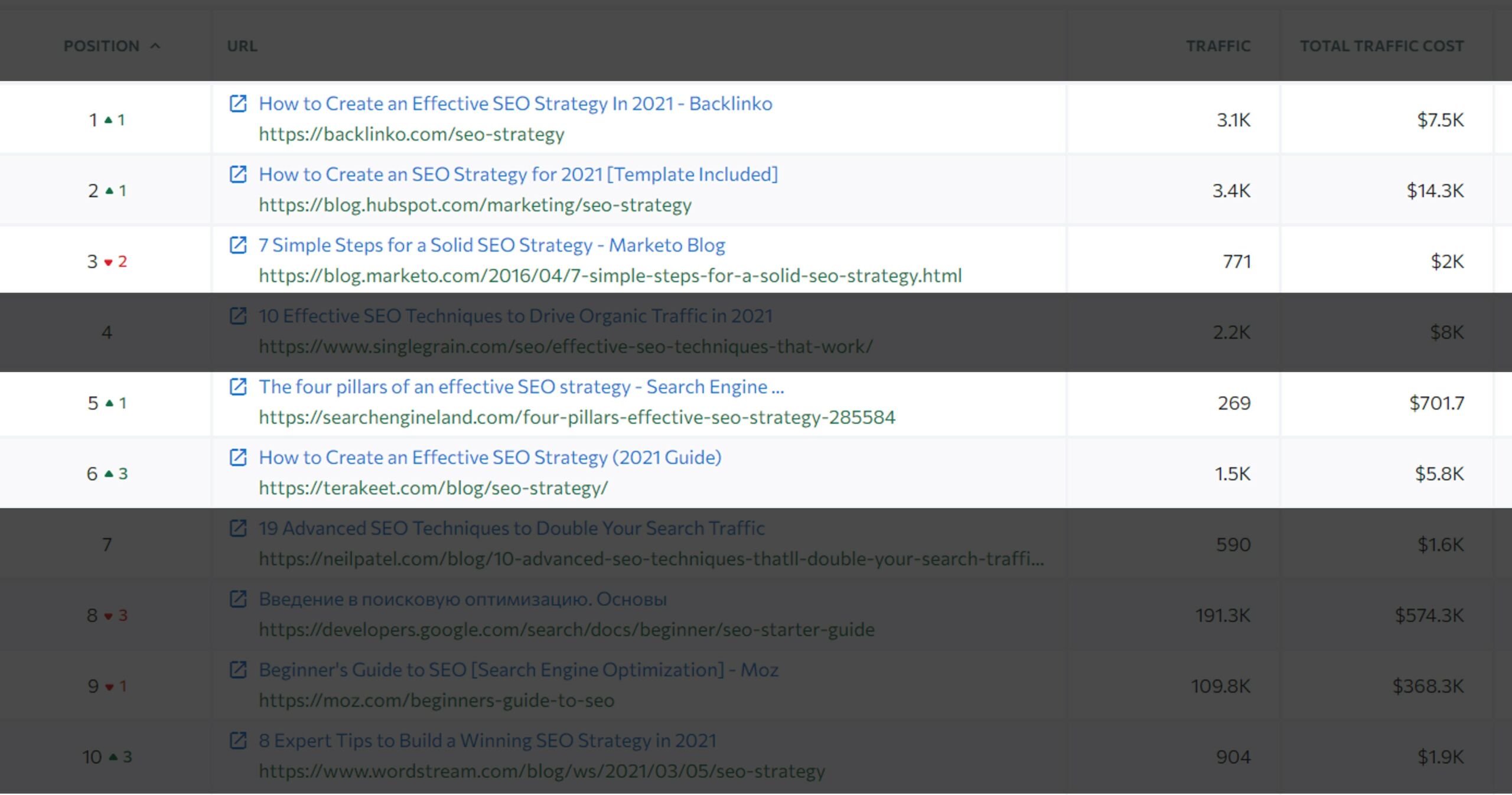
Also, I am seeing, the keyword “seo strategies” is a supplementary keyword to another keyword “seo techniques” as well, which shows me a mix of searcher intent in terms of keyword targeting.
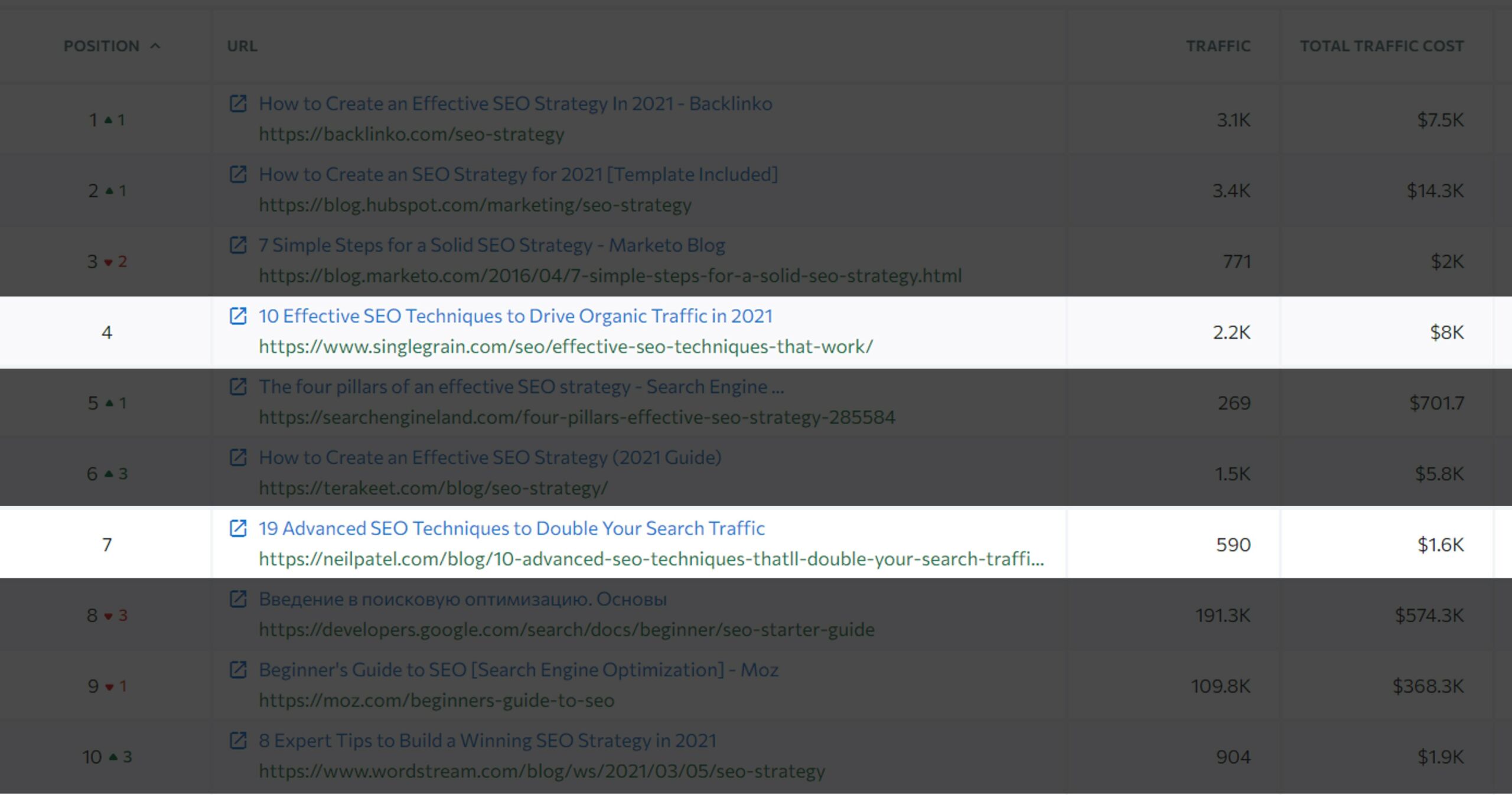
Thus, for me to target this keyword, I will have to target the primary keywords “seo strategy” and “seo techniques” with my content and use the keyword “seo strategies” as an LSI keyword, but about this in the next part.
As you can see, to find searcher intent and figure out what type of content and content angle you should create you just need to follow what Google shows you and create content that appears the most and rank the best.
Strategy #7: Include for LSI Keywords
The next important SEO strategy that you should keep in mind when you are creating content is to include LSI keywords.
LSI keywords are supplementary, relevant, and related keywords that commonly appear with your targeted keyword, and Google, Bing, and other search engines are using these words to better understand your content and determine the topic of your content to rank it accordingly.

And by using these keywords you not only can improve your ranking accuracy but ultimately rank for those keywords as well, maximizing your SEO potential to drive more traffic, more leads and improve your overall ranking.
For example, if I am writing an article about “hot plate”, then using words like kitchen, temperature, laboratory, induction, and electricity within the article will help Google to better understand the overall topic.

Of course, some of these words come naturally, but using some of the LSI keyword finding techniques you can find interesting topic and subtopic ideas to extend your article and provide more value to your users.
Therefore, it is important to spend some time and do research on LSI keywords to ensure you cover everything, or at least most of the topics for your article.
Strategy #8: Start Targeting Low Difficulty Long-Tail Keywords, Then Body Keywords & Then Head Keywords
Another SEO content strategy you should keep in mind when you are developing an SEO strategy is to start targeting relevant low-difficulty long-tail keywords first, then body keywords, and after head keywords.

The reason why you should start targeting low difficulty long-tail keywords and other keywords is that they are often much easier to rank for compared to the body keywords and head keywords.
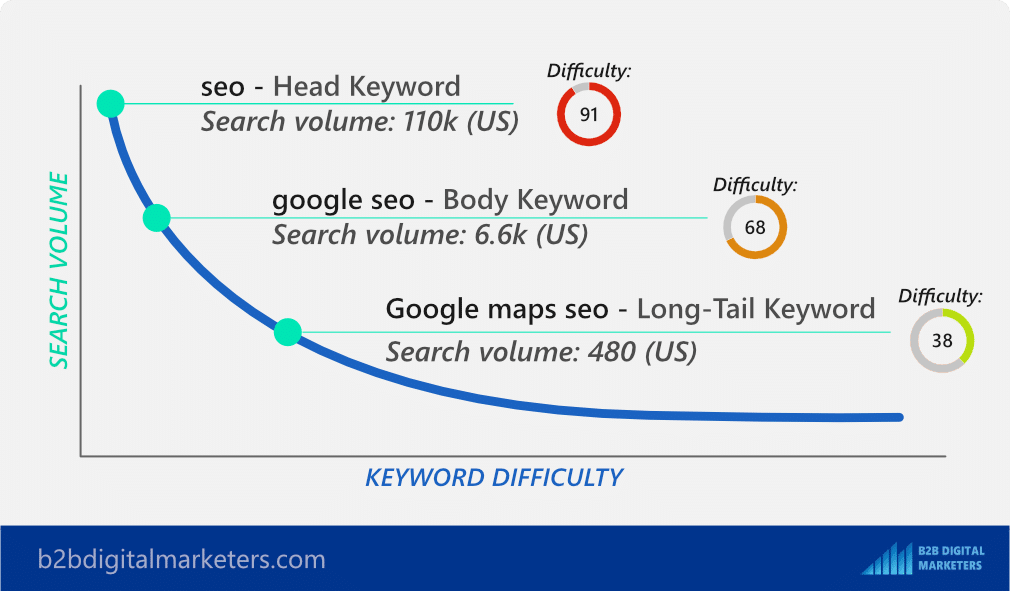
However, the downside is that long-tail keywords have often smaller search demand, but what’s the point of targeting high search demand keywords, when you can’t rank for it, thus not driving any traffic anyway.
For example, you are in the gardening niche, and you found a bunch of keywords related to your niche.
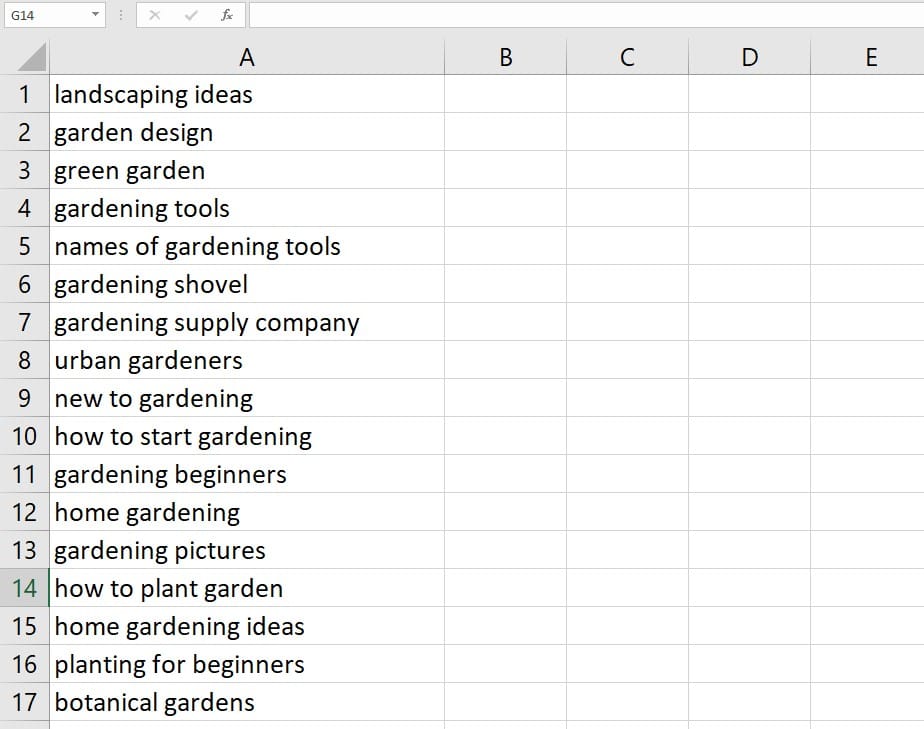
So, to determine the keyword difficulty, you can just pop your keywords into key SE Ranking Bulk Keyword Analysis, and you will get the keyword difficulty score for each of your keywords as well as other important data.
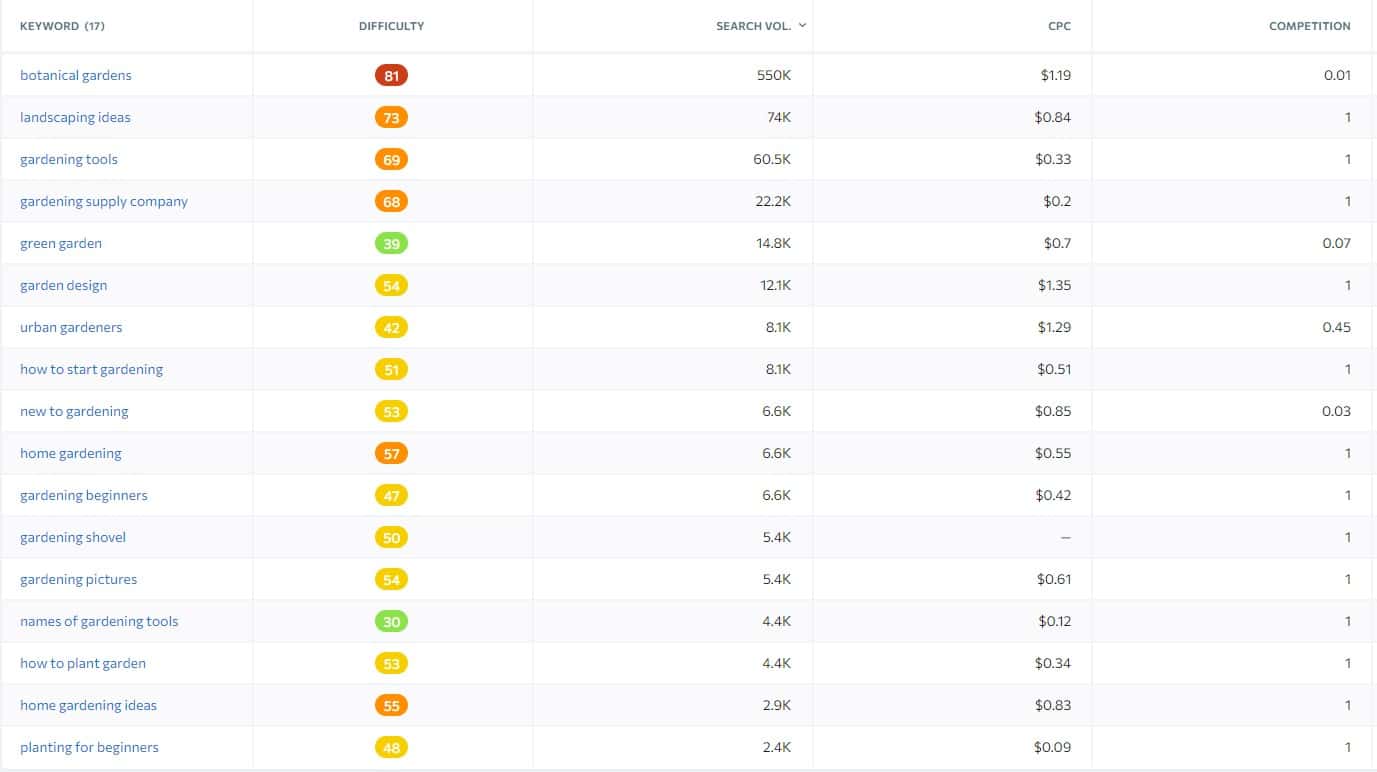
And now you just need to weigh the KD difficulty with other aspects such as the search volume or even Cost-Per-Click to determine which keywords you should start targeting first.
Of course, remember you want to stick to analyzing and targeting keywords within the same topic cluster you have created and then move on to the next one.
And that’s all I have for you for step #2 and let’s move to the next step.
Step #3: Optimize for On-Page SEO
No, when you have done your keyword research and written some great quality content for your website, the next important step is to properly optimize it for your website so Google, Bing, and other Search engines can understand it better.
When it comes to on-page SEO sometimes less is better, than it used to be, as search engines are getting smarter and your way of doing on-page SEO should be as well.
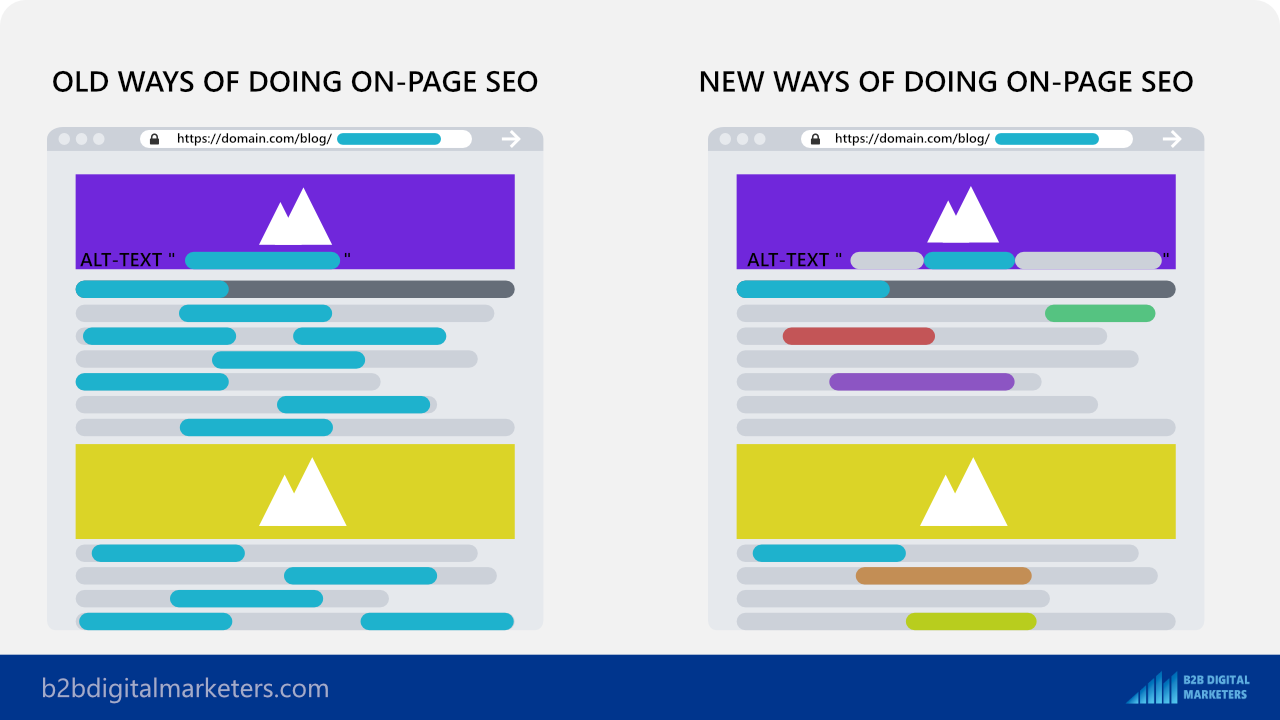
However, there are still a lot of On-Page SEO factors that you should keep in mind when you are optimizing your content.
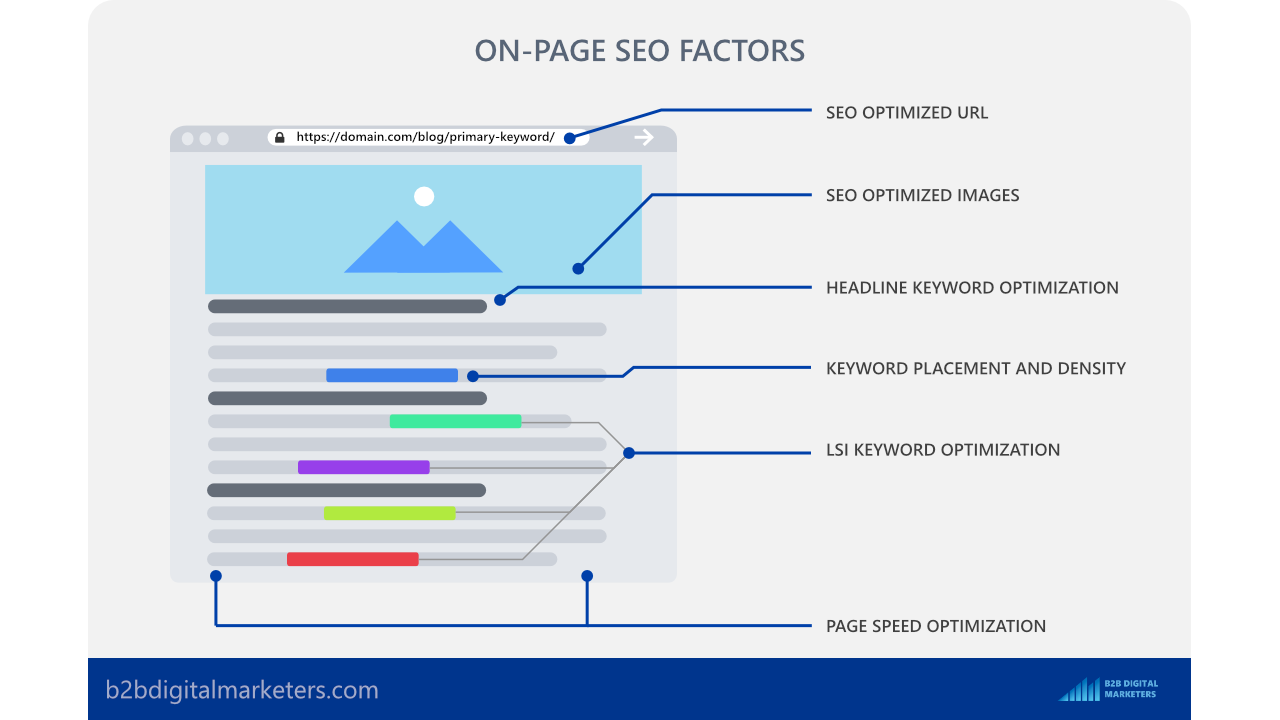
And again, I will not give you the full on-page SEO guide here, but you can watch my video here:
Or you can read my article to fully understand everything there is to on-page SEO.
But, let me share with you the most important SEO strategies and tips that you should keep in mind when you are preparing your SEO strategy:
Strategy #9: Include Keywords in These On-Page SEO Elements
The first important on-page SEO strategy I have for you is to focus on the right SEO elements where you should include your keywords.
So here are 8 on-page SEO elements where you should include your keywords:
1. Include only your primary keyword in your URL. For example, whenever I publish an article, you can see I pop my targeted keyword there and nothing else. And that applies to every page.
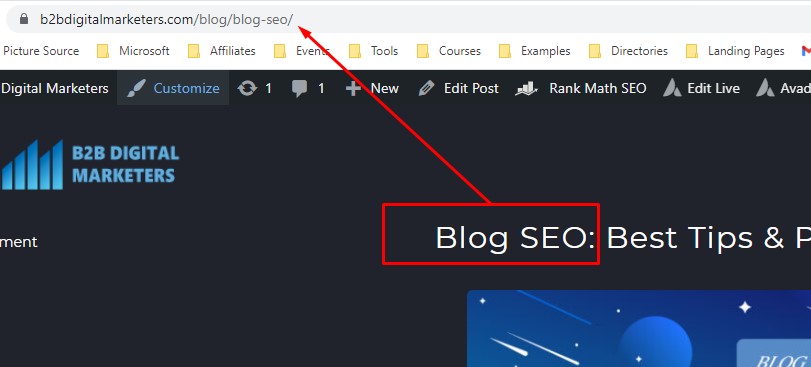
2. Include your primary keyword in your headings. Usually, it is recommended to put it in front for relevance reasons, but if you have a very click-worthy title, then putting it at the middle or end is fine, as long it is visible.

3. Include your primary and top LSI keyword in the title and alt-text of your featured picture. For LSI keywords, I usually choose the one with the highest search demand or the one I believe could bring me more traffic from the beginning by looking at keyword difficulty and search demand.
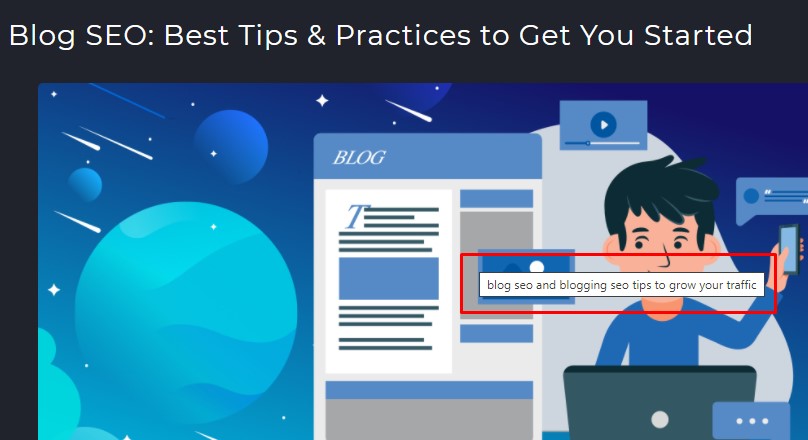
4. Include your primary and LSI keywords in your subheadings. A primary keyword can be included only once or twice where it makes sense. The LSI keyword is typically the big topic related to your primary keyword.
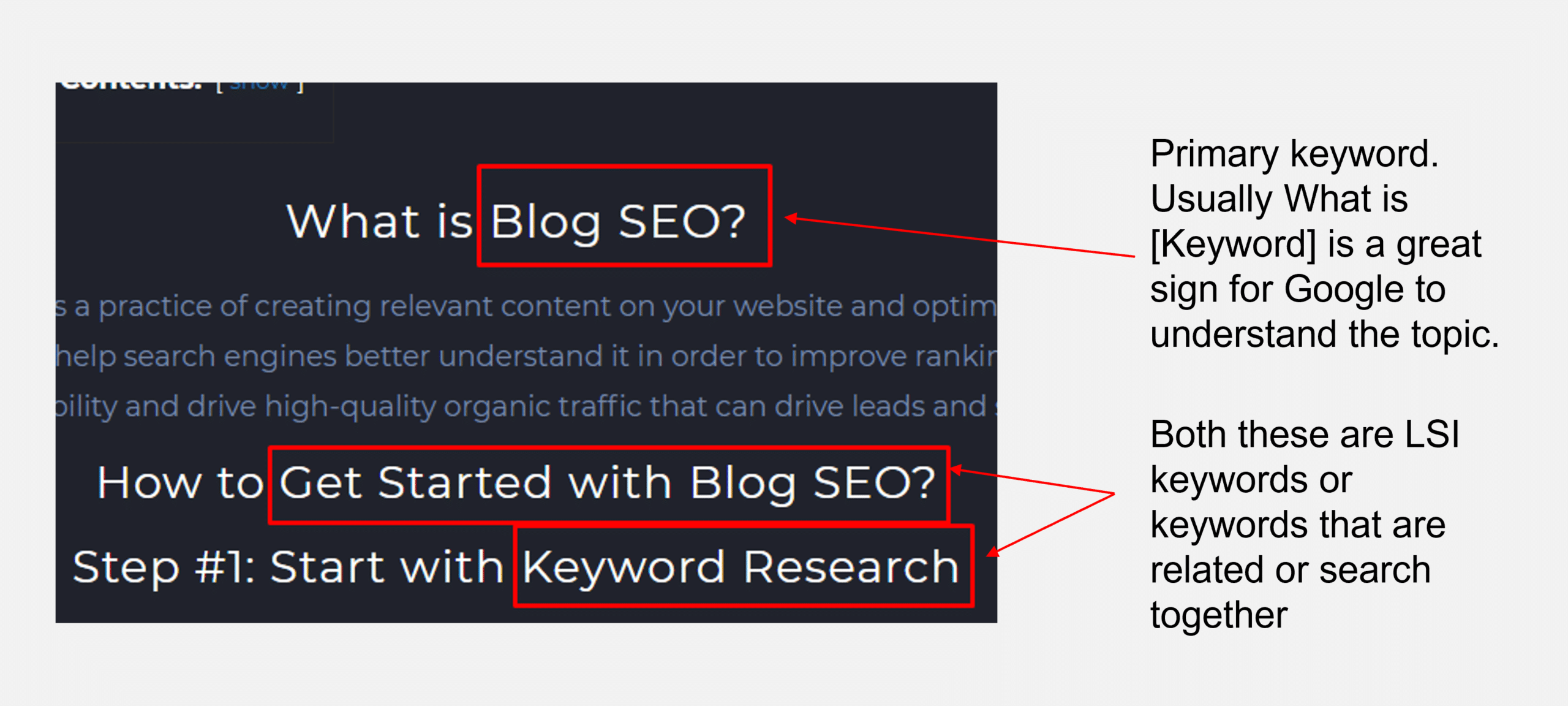
5. Include your primary keyword in the introduction, or the first 200 words, and also include one of your main LSI keywords. Everything should be in logical sentences. Always better to focus on natural language than forcing keywords.
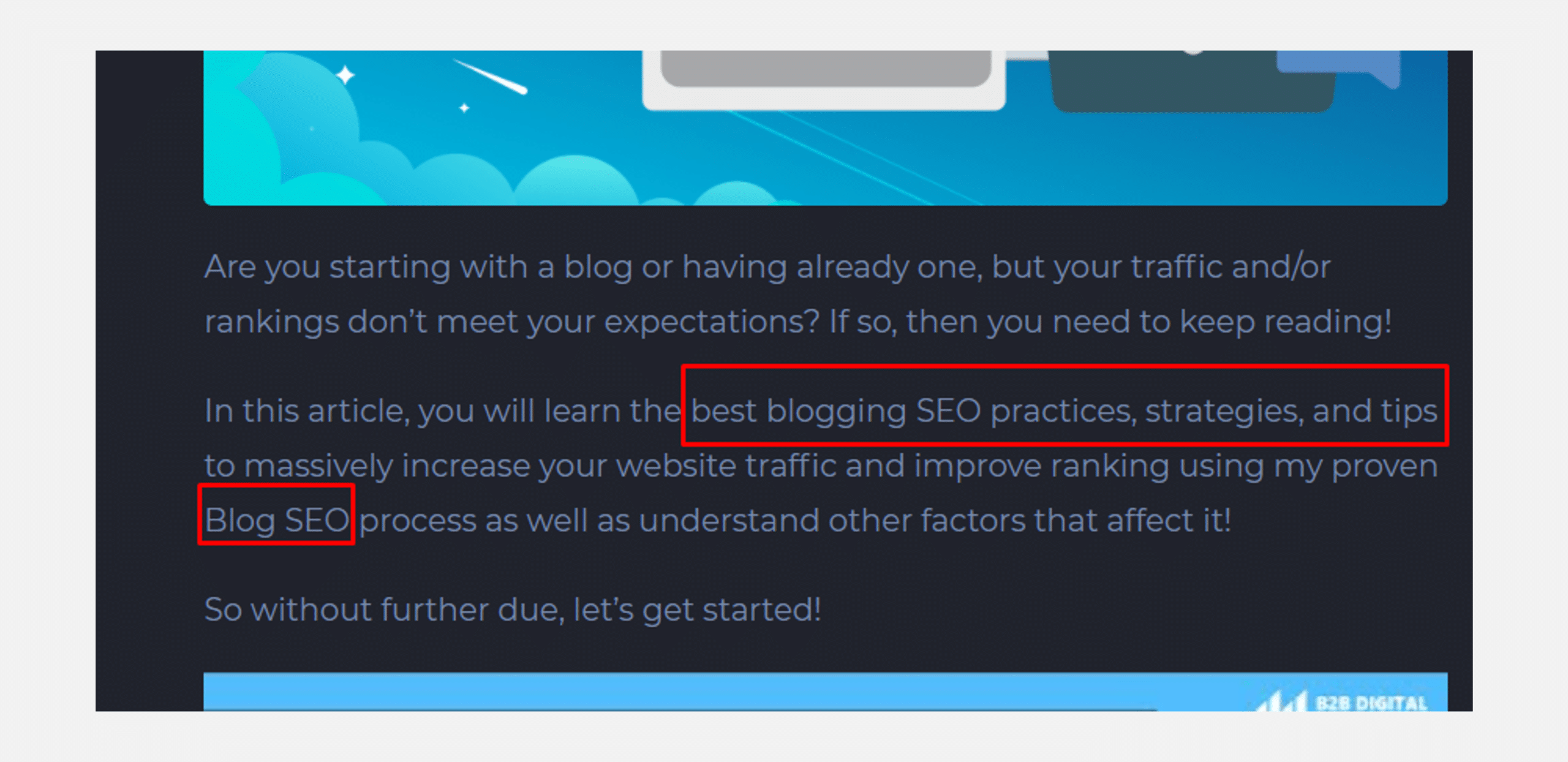
6. Include your primary and other LSI keywords in other images sporadically. Don’t go overboard, just use a short description of the image like you would explain it to a blind person in the shortest form and include the keywords if it fits.
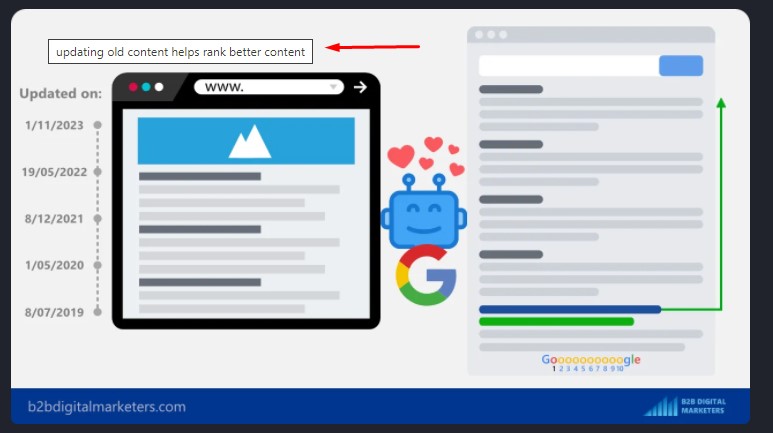
7. Include your keyword in anchor text in other articles and pages. However, don’t over-optimize it or rewrite the sentence to fit the keyword. You can use an anchor as a part of a sentence if it makes sense to the linked page.
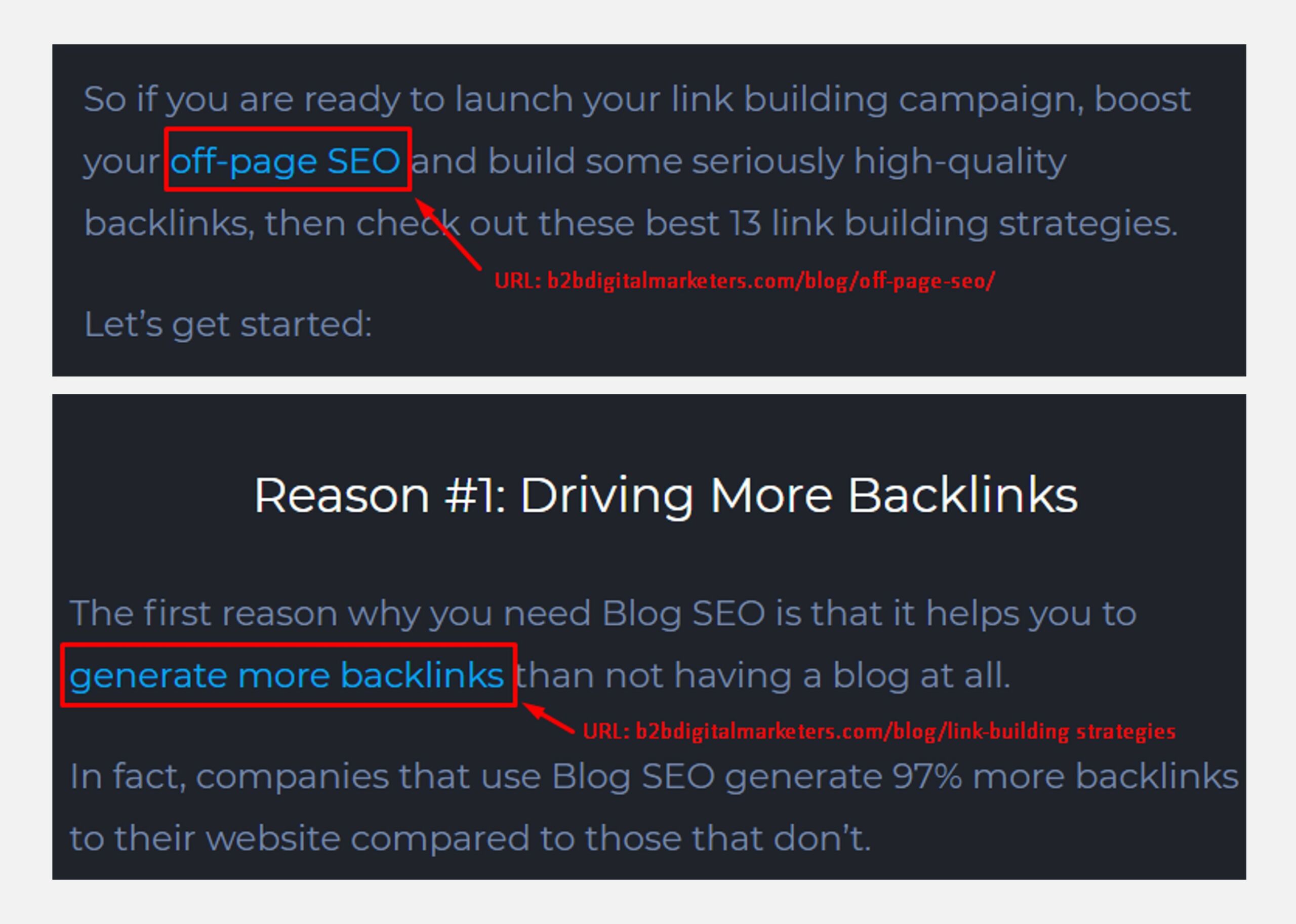
8. Include your keywords in the content naturally and fitting way. Try to have around 0.2%-1% keyword density but don’t stress around it.
So, here you have 8 keyword placements tips where you should include your primary and LSI keywords. However, it should be in a natural way, and you should not force keywords as it is against Google quality guidelines. Also check out my how to put keywords in WordPress guide.
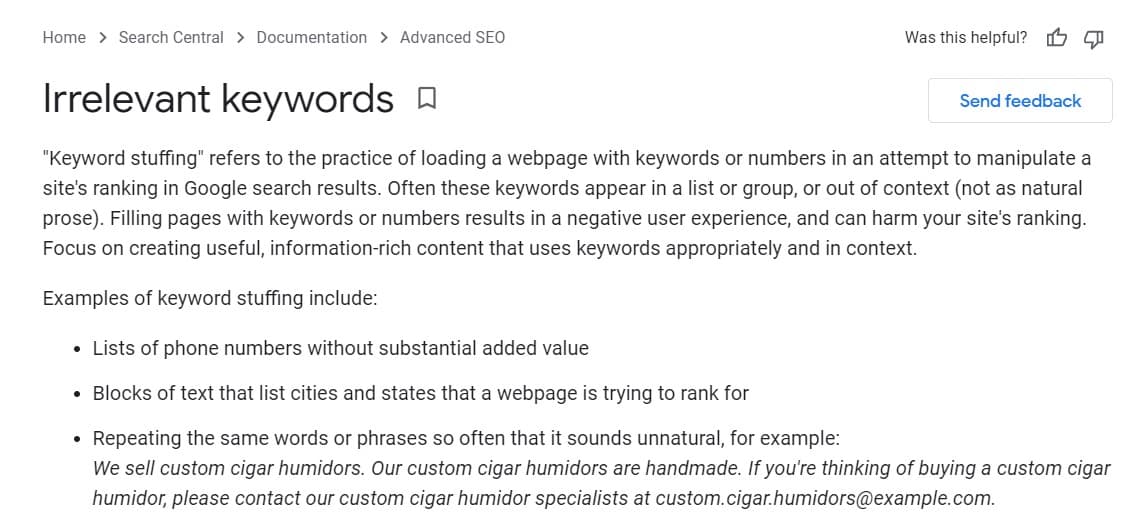
Strategy #10: Optimize Your Title Tag and Meta Description
The second on-page SEO strategy that you should keep in mind whenever you publish a new article or any page on your website is to optimize your title tag and meta description.
Title tag and meta description are the first things your potential visitors will see, when they are deciding which page to visit and ultimately decide if they visit your or your competitor’s web page.

However, Google is not using meta description and including keywords in there as a ranking factor and they rewrite meta description for pages over 70% of the time.
And Google also rewrites title tags as well and it is only a tiny ranking factor.
However, just because Google is not using these elements as proper ranking factors, they are actually more important than you think.
Like I said, your users are using them to decide if your page is relevant to their needs and if you are ranking on the first page on Google and nobody is clicking on your page, then your page will be quickly pushed down as it did not meet the expected CTR. That’s why CTR manipulation is a big thing.
Therefore, these two indirectly but very importantly influence your ranking as CTR.
Now CTR is nothing important without other engagement metrics, but having a properly optimized meta description and title tag improves your chances to get users to click your page and ultimately your content to satisfy user intent.
However more about CTR in step #6.
Strategy #11: Add Appropriate Schema Markup
The next on-page SEO strategy I have for you when you are preparing your SEO strategy is to add appropriate schema markup to your page.
Schema markup can be a very powerful way to improve your SEO results as it can tell Google what your content means and show it appropriately in the search results as rich results.
For example, if you are running a food blog, with your own e-commerce store, then you might want to use several schema markups depending on the purpose of the page, let me show you:
One of the first schema markups you might want to implement is the Carousel to display your list of recipes from your site.
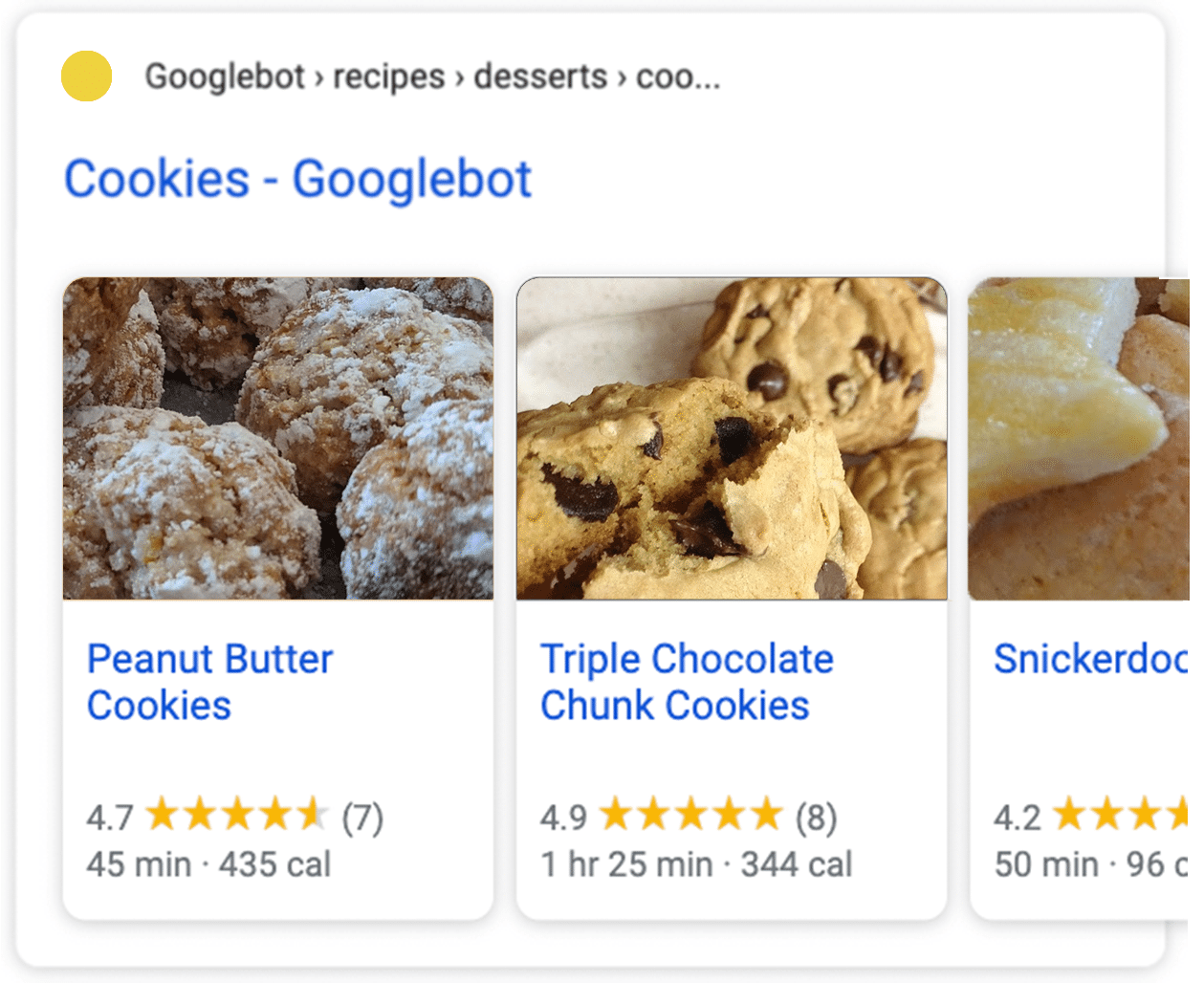
(Source)
Another important schema markup would be the “Recipe” schema markup for your recipe page to display important information from your recipe in the SERPs.
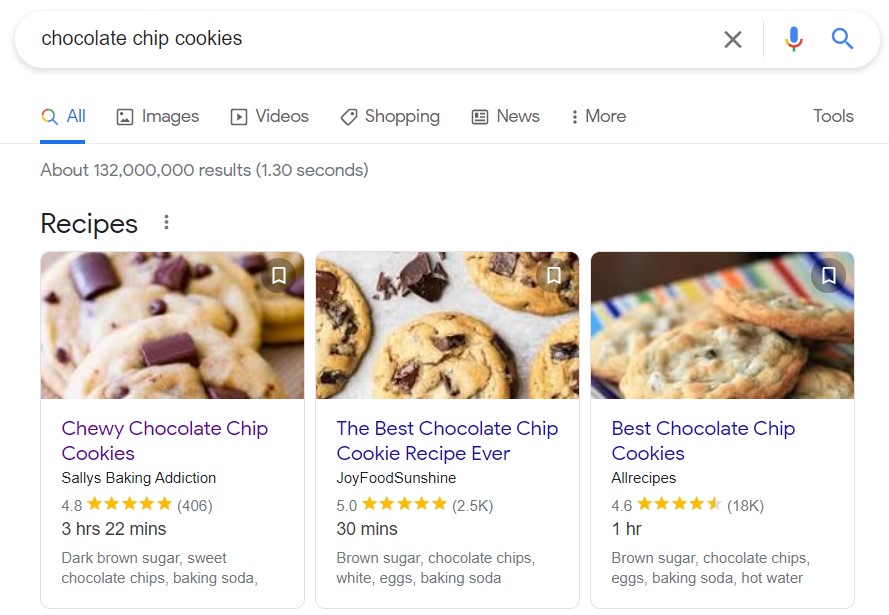
Then you would want to implement “product” schema markup for your e-commerce shop.

Then of course implement “Article” schema markup so you can appear in the Top stories carousel and with rich result features, such as headline text and larger-than-thumbnail images.

And you can also implement “Book” schema markup for your new recipe book.
And like this, I could carry on. There are many schema markups that you can implement for your website pages to boost your site visibility, improve click-through rate, drive more organic traffic and sales for your business.
And luckily, implementing schema markup is not difficult anymore and you don’t have to do any manual coding as there are many plugins you can use if you are using the WordPress CMS system.
For example, I am using Rank Math and the tool helps me to easily implement the most common and used schema markups.
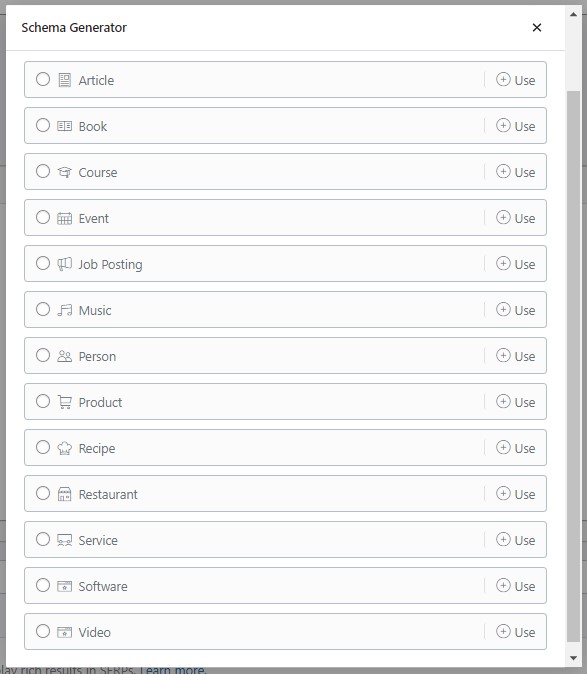
Just you can select your schema markup and then fill up the required information for the schema markup.
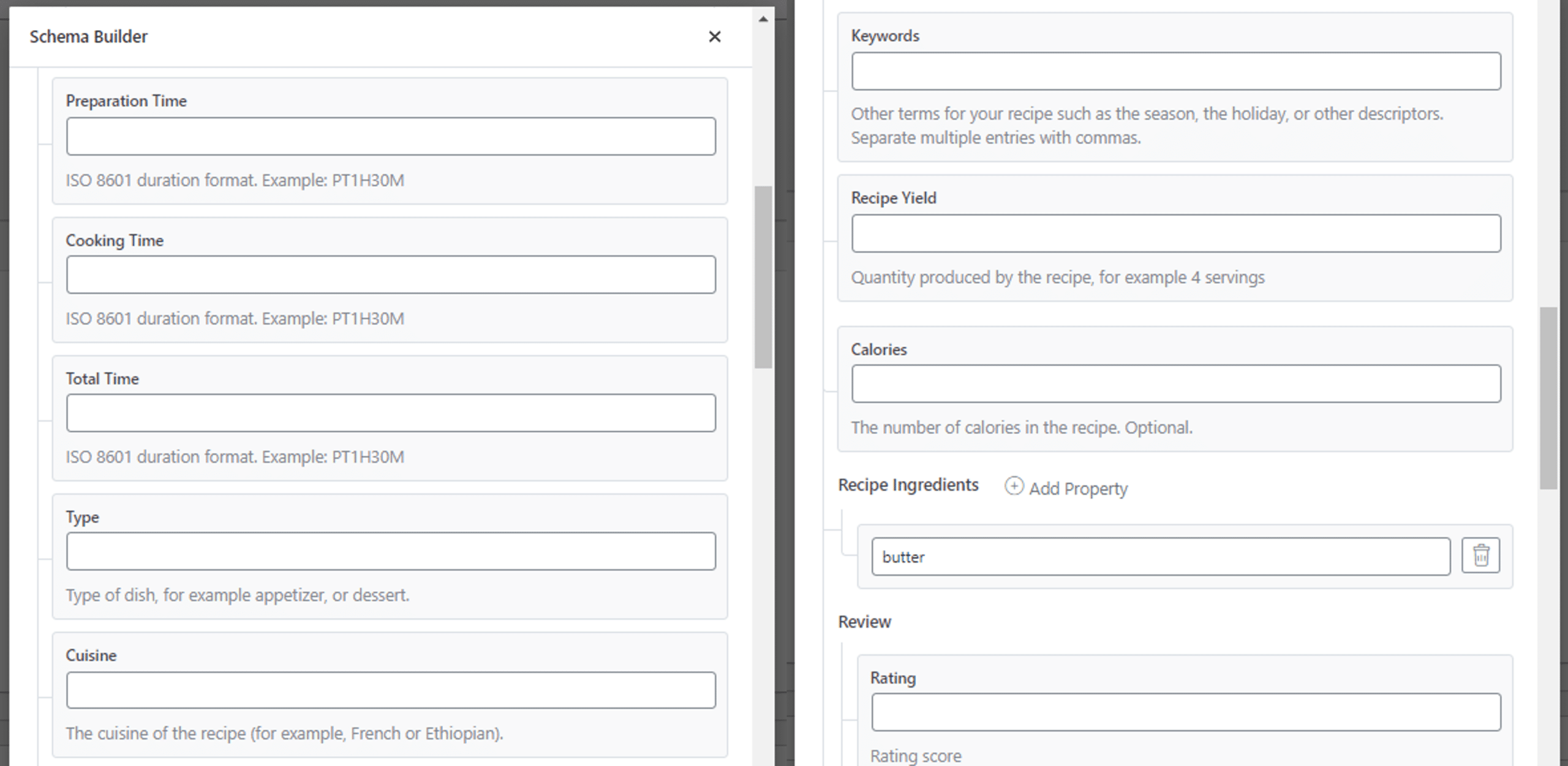
And once you publish your page, then you can use Google Rich Result Test, to see if everything works fine.

As you can see, this person has implemented numerous schema markup for their page which is absolutely fine to have multiple schema markup for your web page.

So, don’t forget to implement the right schema markup whenever you publish a new page or blog on your website.
Strategy #12: Use On-Page SEO Checker & SEO Plugin
And the last strategy I want to share with you is to use an on-page SEO checker or SEO Page Checker and SEO plugin for your on-page SEO optimization.
When it comes to on-page SEO, content optimization, and general SEO optimization, there are so many things you can do and of course, you will forget to do something.
Therefore, I recommend having some form of checklist to ensure you always optimize your article or blog post for SEO in the best way you can.
And of course, you can use a spreadsheet or excel, but that takes a lot of time and manual work. Therefore, having second and third pairs of eyes will help you to always publish fully optimized SEO web pages.
So, first I recommend you install an SEO plugin, if you are using WordPress, then I can recommend you Rank Math.
Rank Math provides an on-page and content SEO checklist based on your targeted keyword to help you tackle the most important SEO aspects such as keyword placement, internal linking, content length and so much more.

And then whenever you publish a new web page, whether it is an article, product page, or any other page I recommend you use an on-page SEO checker such as from SE Ranking.
This nifty tool gives you a more granular and detailed overview of how well your web page is optimized for SEO and it gives me a bunch of recommendations on how to improve your content for better ranking, such as the title tag, meta description, image usage, the usage of the keywords and much more.
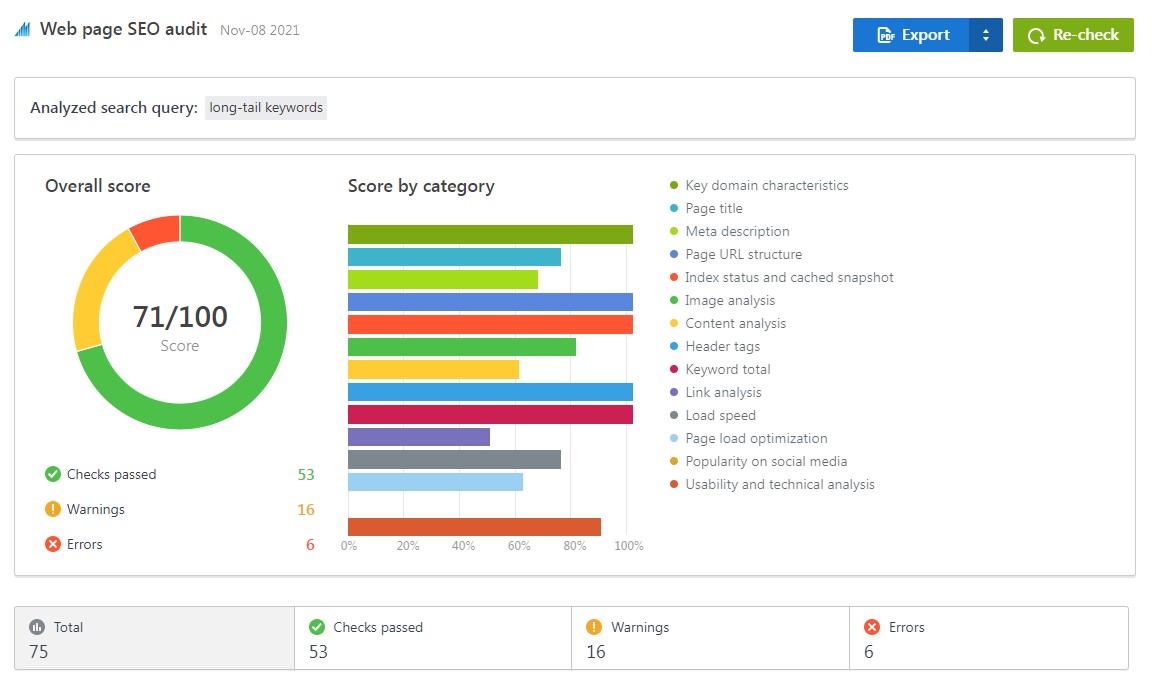
So, while using only the SEO plugin, my SEO score is nearly perfect, but the on-page SEO checker shows me there are still a lot of things to improve on to get maximum SEO impact.

So, before you completely finish with your web page, I recommend you to final check using these tools to make sure you have not missed anything.
And that’s all for on-page SEO so let’s move to the next step.
Step #4: Launch Your Off-Page SEO Campaign
The next step is off-page SEO.
So, by now, you should have your keywords, the content created that is fully optimized for on-page SEO, so the next important step is to build trust with search engines using off-page SEO techniques.
Yes, off-page SEO is so much more than just link building strategies and if you want to start getting eyeballs on your website, you will need a proper off-page SEO campaign, that will not get you penalized but helps you to build trust with Google, Bing, and other search engines.
And again, if you don’t know anything about Off-Page SEO, I recommend you watch my off-page SEO guide here:
Or read my Off-Page SEO guide to get the full picture and know exactly what to do in this step.
However, I want to share with you 4 super important SEO strategies and tips that you should know when you are planning your off-page SEO campaign for your SEO strategy, let’s get started:
Strategy #13: Build Your Social Fortress
The first thing you have to do, whenever you want to build an online presence is to start like every normal business would do and that is building a social fortress.
The social fortress is the foundation of your off-page SEO and online presence outside of your own website and it works to build your digital reputation and trust with your users, big G, and others by registering your website on social media such as:
- YouTube
- TikTok
- And Other Social platforms

And the reason why this works is that these websites are well trusted by those mentioned above and it helps them to validate your website.
For users, it gives them a sense of security and getting to know your business a little bit better, while for Google it gives more data sources to learn more about your website, which at the beginning has very little.
And for Google to trust you, they must decide if the website is run by a real and nice person like you or some bad boy.

And by mimicking the way how normal business would start their only presence you will start building trust with Google.
Therefore, before you start building backlinks and getting link insertion, make sure you first build your social fortress! Check out SEO vs SMO.
Strategy #14: Build Backlinks in the Natural Way of the Internet
The next off-page SEO strategy or tip that you should keep in mind is to build backlinks in a natural way on the internet as link building benefits are enourmous.
Many SEOs and website owners once they learn that backlinks are super important, start building backlinks in any way they can so, they can get on the first page of Google.
However, this is often how websites get penalized or lose 90% of their traffic.

So, to avoid this, there are a few rules that you should keep in mind and for sake of simplicity, we divide it into two sections and that is:
- Location of Backlinks
- Speed of Building Backlinks
Location of Backlinks
There are a lot of ways and locations, where you can get your backlinks such as from homepages, reviews, partner sections, or blog posts. Here I will focus on getting links from blog posts as that’s where you will get most of your backlinks and where people make the most link building mistakes.
Building backlinks is a natural way means you need to imitate the actions of a normal business. You did the first step by building your social fortress and sharing your content to get social shares.
The next step is to build backlinks. Now, you cannot just simply get from anywhere, as that’s suspicious and Google can quickly figure out you are doing dogy link building and devaluates your backlinks.
Instead, you need to start with building backlinks from a new page by doing guest posting, resource link building, guestographics, etc. as the likelihood of getting a backlink from a brand new web page is much higher than from an aged-web page.
Because if you start getting links from aged pages, it starts looking fishy and it might trigger the Google spam detector. Therefore, stick mostly to building backlinks from new pages and mid-range authority domains at first.
Speed of Building Backlinks
And in terms of the speed of building backlinks, you cannot simply just build as many backlinks as you want within the first weeks. (Learn how to maximize your link building opportunities with tiered link building.)
Instead, look at the total number of backlinks your website has by using a backlink checker like SE Ranking.
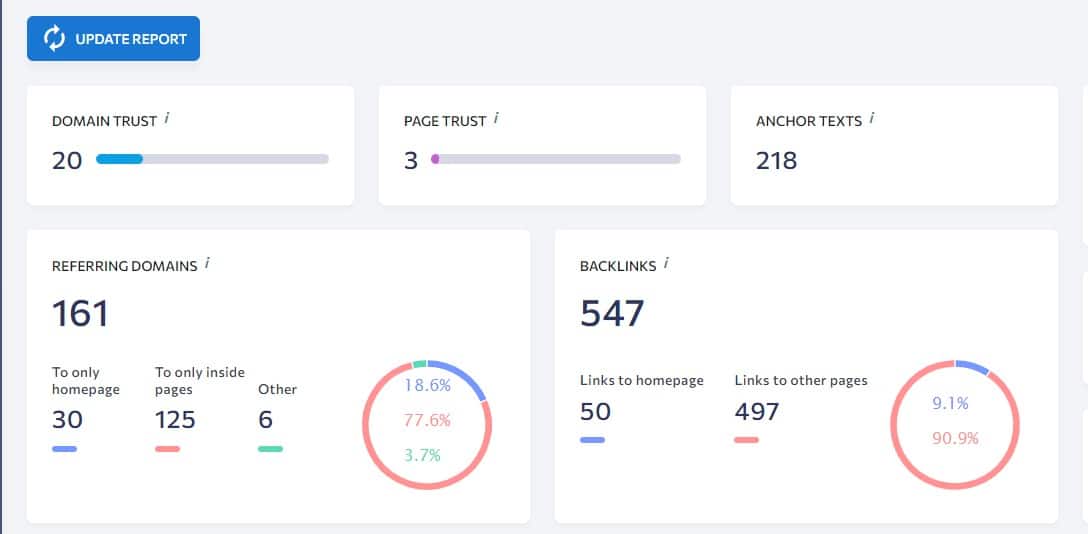
And then based on this, you can increase your backlinks by 1-2%. So, for example, if my website has 500 backlinks, then I can build 5-10 backlinks a week to stay safe.
If you are below 100 backlinks I recommend you to build around 1-2 backlinks every week and once a while you can build 5 backlinks.
Also, I recommend you to first focus on low and mid-tier authority websites, as those are easier and help you to build trust, to get guest posts on high authoritative domains.
And like this, you can still stay safe and keep growing your backlink profile without triggering the Google spam detector.
Strategy #15: Avoid Spammy Websites & Techniques
The next strategy that you should avoid and keep in mind when you do any form of link building is to avoid spammy websites & techniques.
This goes without saying, however, I want to share with you some of the tips to recognize spammy websites and techniques.
Tip #1: Avoid Trigger Guest Blogging Words
In many cases, you might find advice for guest blogging to find opportunities by using Google Search Operators. However, this is a very bad strategy, and you should avoid it! Google hates guest blogging and any website that publicly shows they accept guest posts will get devalued.

Tip #2: Avoid paying for links
In many instances you will be required to pay for links, however, in the case of guest blogging, I recommend you avoid websites that charge for guest blogging insertion.
That same applies to link insertion, as like this everybody can buy links from them, and Google can quickly discover such websites and penalize them. And you don’t want to be associated with them when this happens.
Tip #3: Avoid link exchange schemes
When it comes to link exchanging there is only a fine line between doing it the right way and bad way.
In many cases, you will do a reciprocal link exchange, where you link to a domain and they will link to you back.
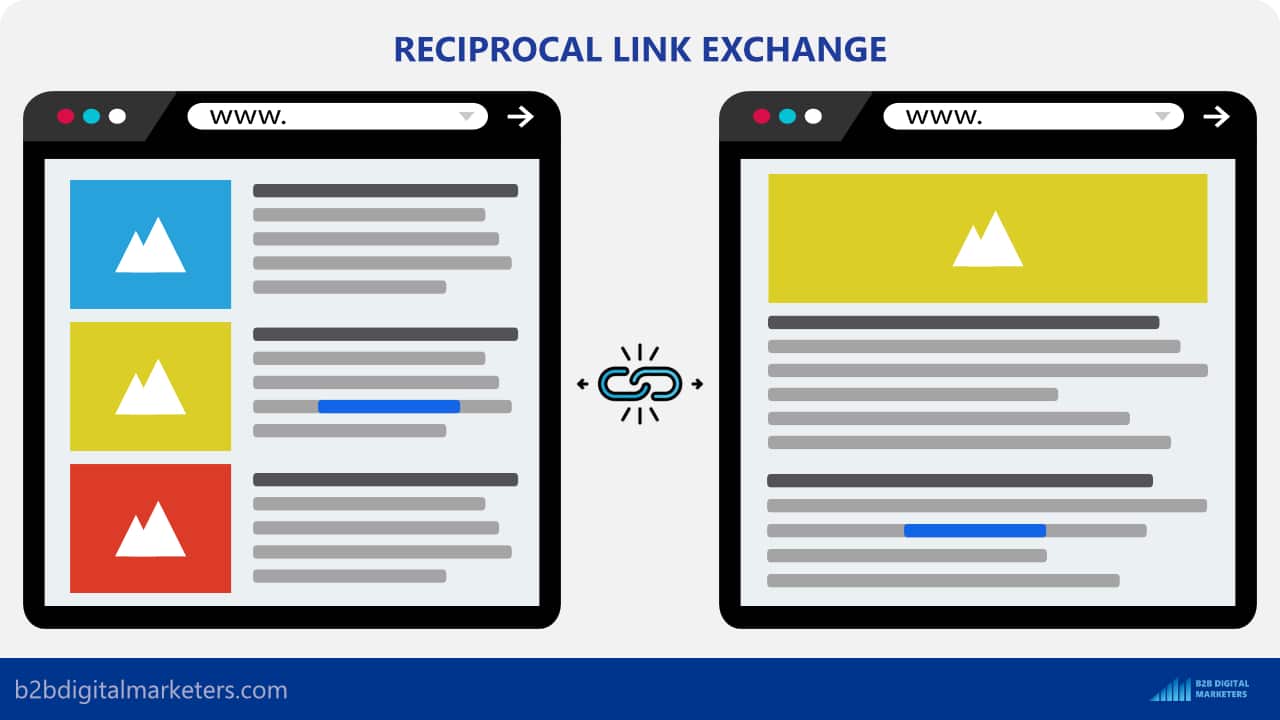
Or non-reciprocal link exchange, where you link to a domain, that domain link somewhere else, and another domain link to you. This is a safer way to go about link exchange.
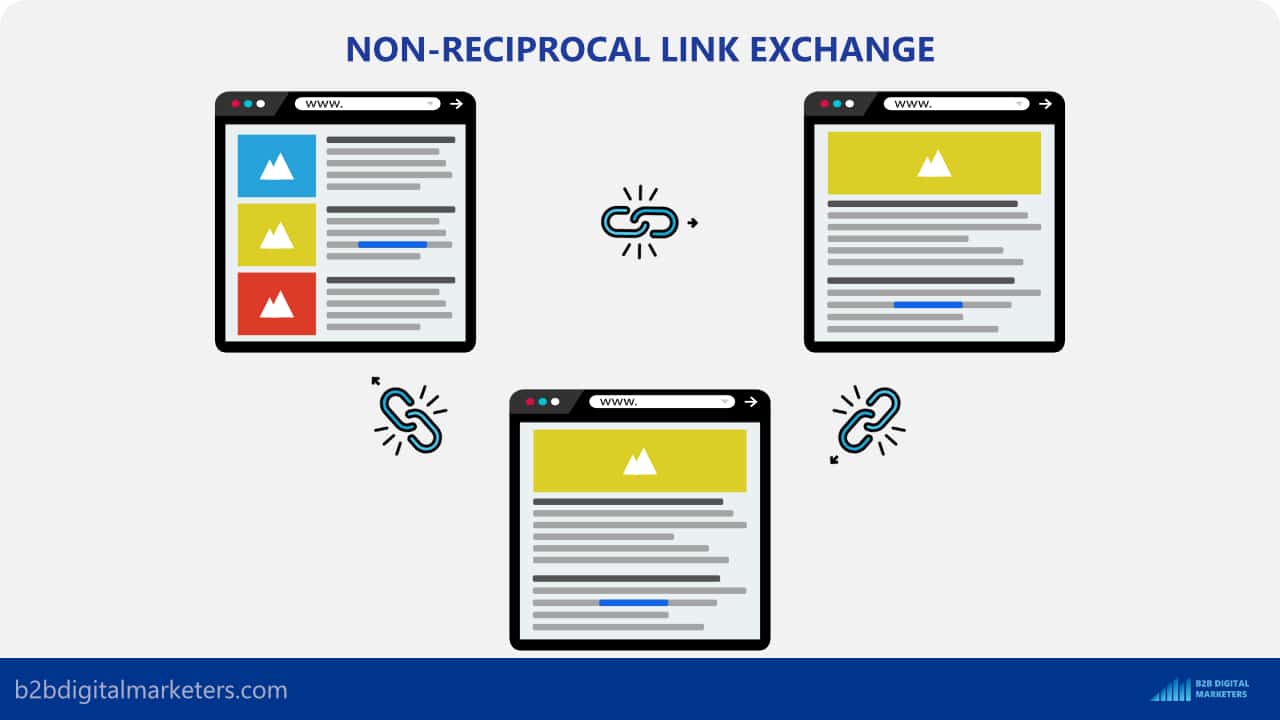
And this deal should stay behind closed doors without a big G presence. However, you can find websites where in terms of conditions, they have mandatory link exchange…
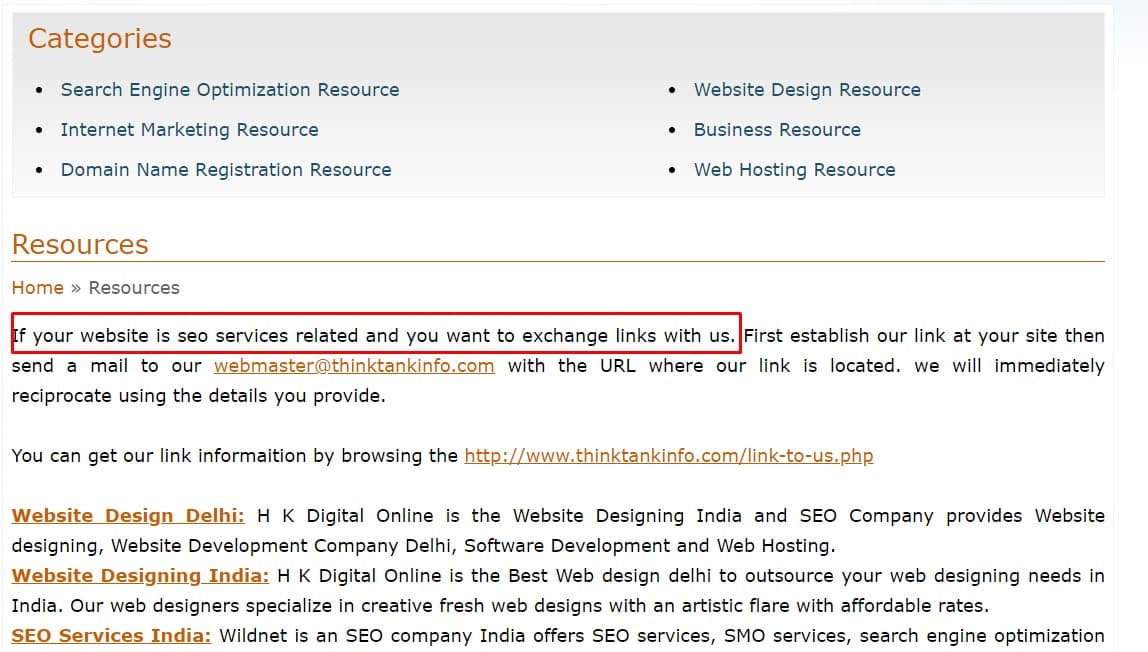
And you want to avoid such sites. Even if you are getting website design, you don’t want to accept those that require you to link back to them from your footer or something like that.
All this is against Google quality guidelines and you should be super careful.
Tip #4: Avoid websites without traffic
And the last tip I have for you is to avoid websites without any traffic.
Now, there can be new websites that just started and building their online presence and nothing bad with it and you can decide if you trust them that in the future they will become the good guy for Google.
However, then there are those aged websites that publish content and don’t have any organic traffic and such websites you want to avoid!
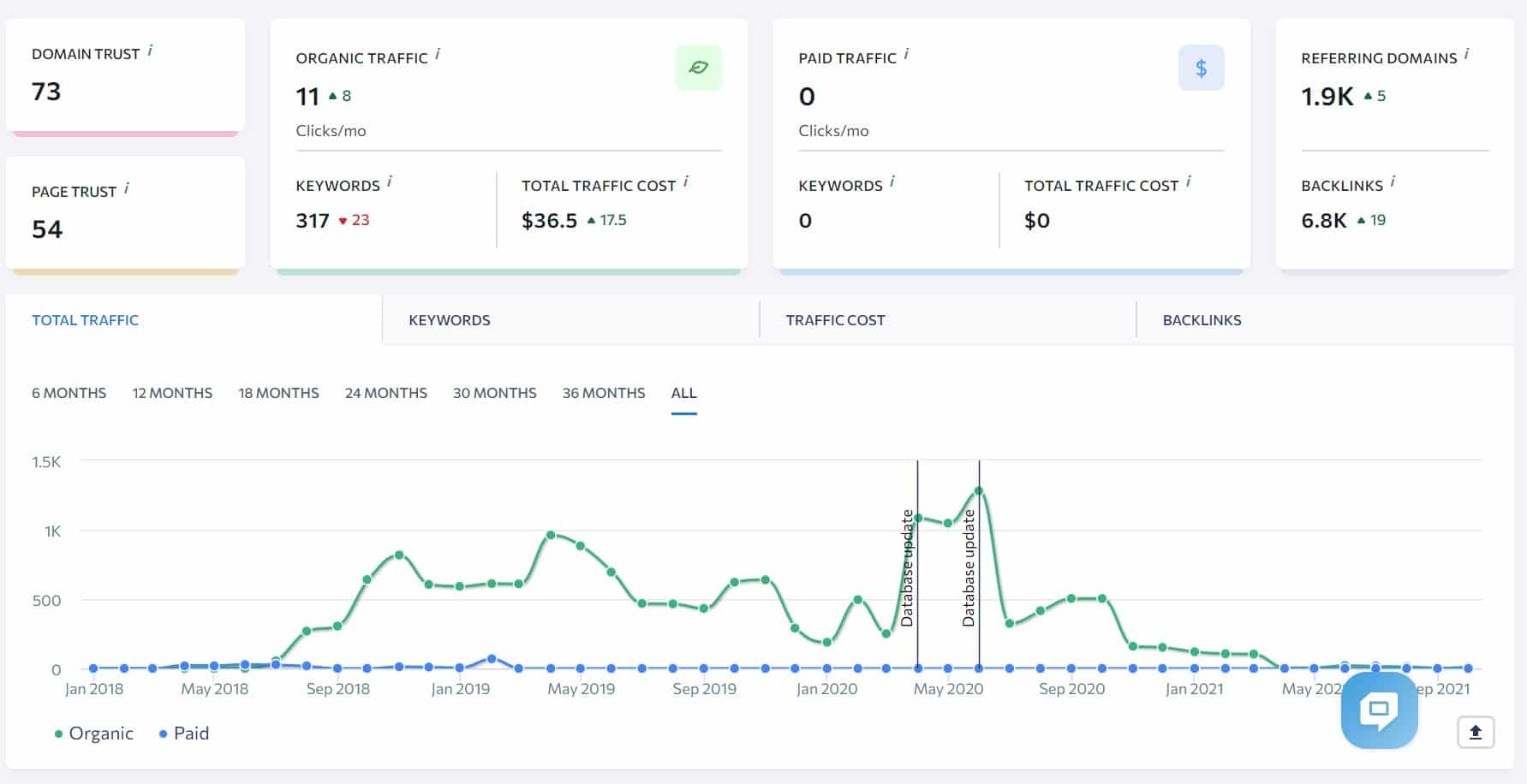
And the reason why is because if Google does not send any traffic to a website, that means they don’t trust it. And regardless of the reason, you don’t want to be associated with such a website.
So, whenever you start any link building campaign, make sure the domain where you want to build a backlink has AT LEAST 500 organic traffic, preferably 1,000 according to your SEO tool.
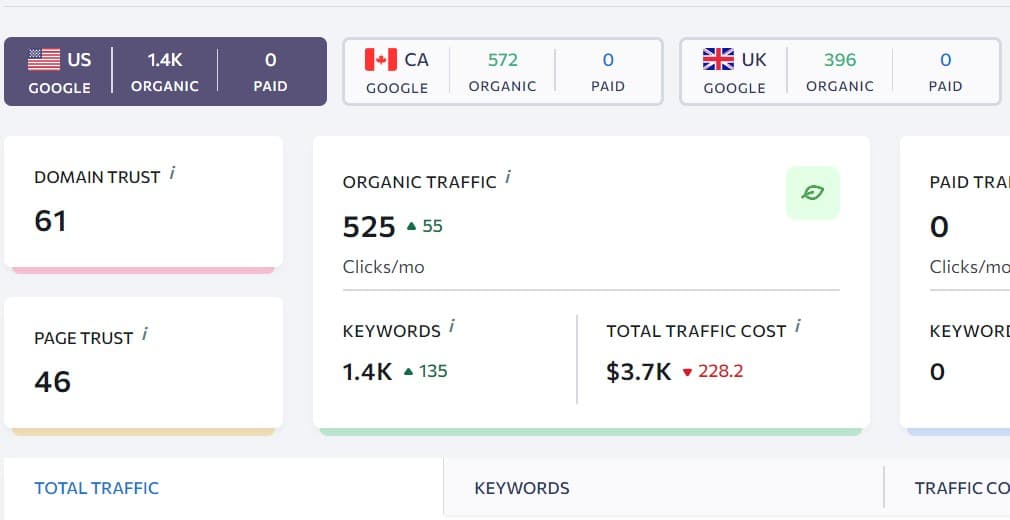
Strategy #16: Do Competitor Backlink Analysis
And the last link building strategy I have for you when you are planning your SEO strategy is competitor backlink analysis.
Competitor Backlink Analysis is a strategy to analyze your competitor backlinks to find any backlinks opportunities for your website. It gives you information about how, where, and when your competitors are building backlinks.
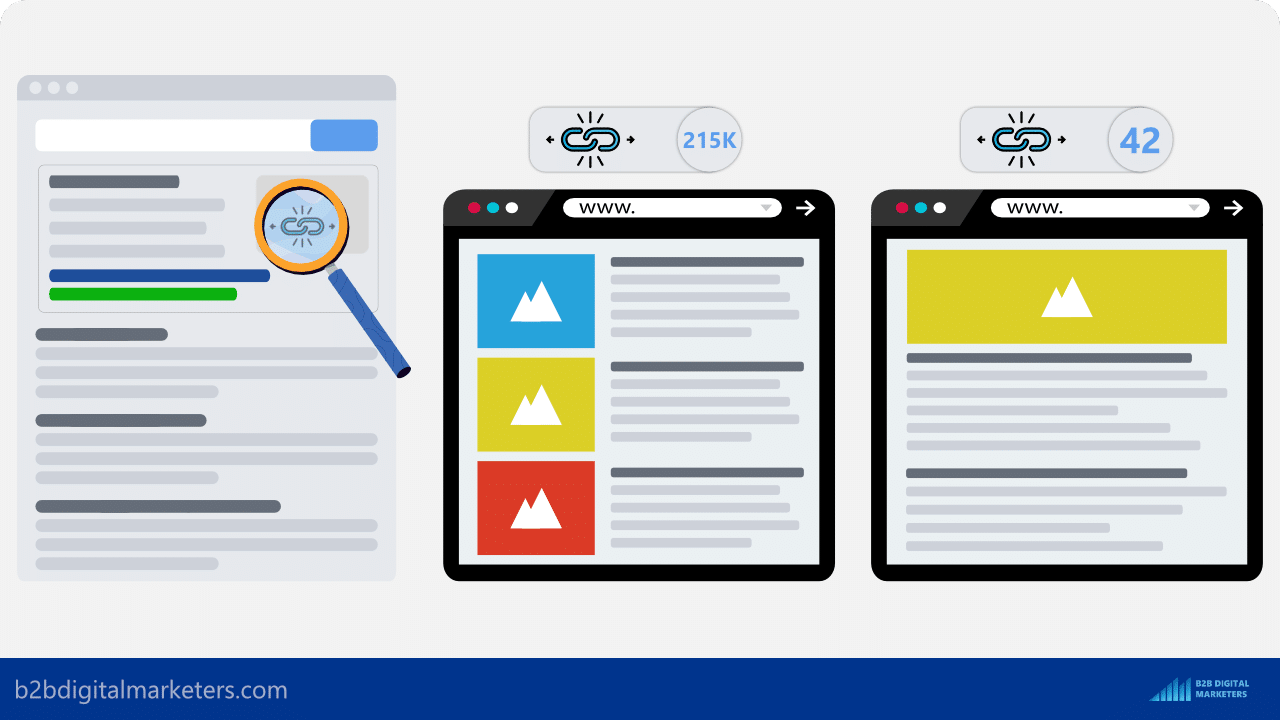
It is definitely one of the best ways to start link building campaign and to find tons of great link building opportunities for your website.
Step #5: Optimize Your Website for Technical SEO
The fifth step is to optimize your website for technical SEO such as page speed, crawling and indexing, mobile optimization, security and so much more.
Technical SEO helps you to optimize your content and pages for user experience as well as for search engines.
Honestly, technical SEO is the first thing you should implement before you do anything on your website, and you need to have your technical SEO up to the game otherwise even the best quality content will not rank in search engine result pages (SERPs).
And this means you need to help search engines to find, crawl, render and index your web pages, especially at the beginning when you don’t have any external links coming to your web page.
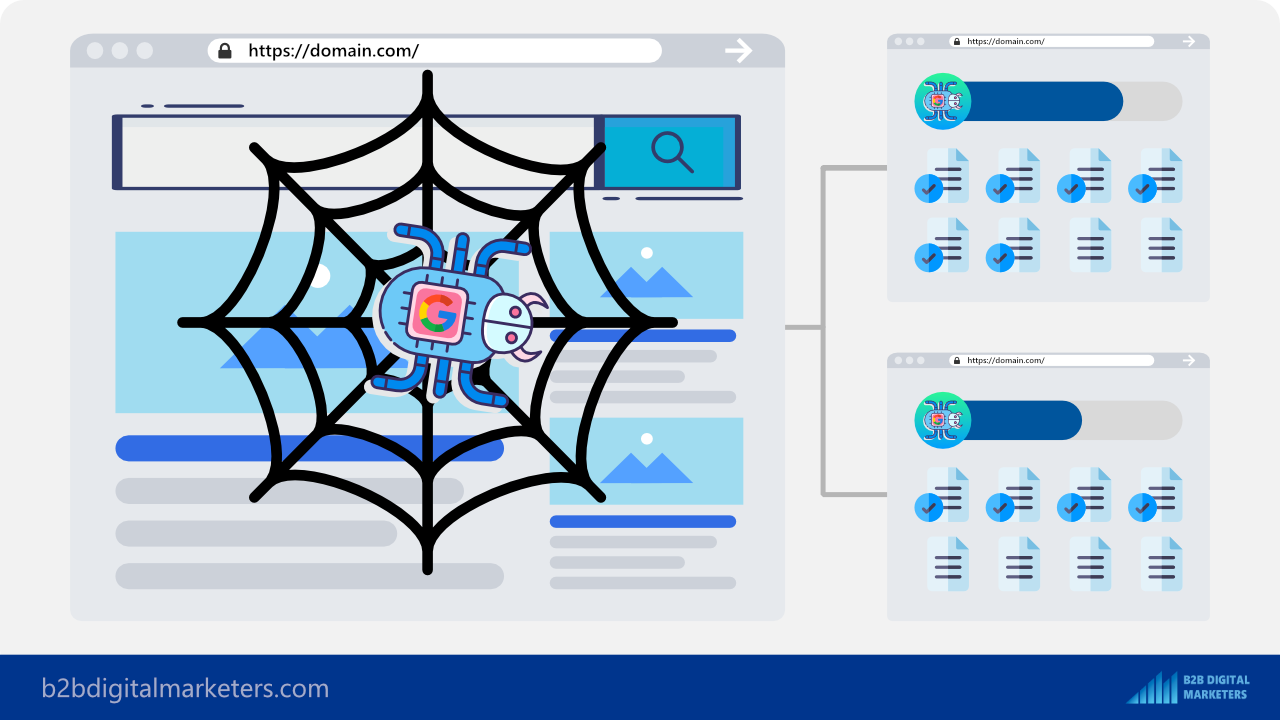
Search engines like Google or Bing are using mainly external and internal links to find all your website pages and the internet. However, if you don’t have any external links pointing to your website, then you must help search engines to find your content, especially for the new website, and newly published web pages.

Nevertheless, that is the basic. Technical SEO also helps your website to meet the technical requirements of search engines such as website speed, responsiveness, security, not duplicate content, and many more technical aspects.
So, I definitely recommend you check out my video on Technical SEO so you can properly optimize your website:
Also, you can visit my Technical SEO guide to learn more.
However, let me share with you some of the best SEO strategies for your technical SEO so you can prepare your winning SEO strategy:
Strategy #17: Use CDN for Your Website
The first technical SEO strategy I have for you is to use CDN (Content Delivery Network) for your website.
Using CDN is one of the best technologies you can use for your website to increase website speed and protection, which in results can improve your SEO rankings.
CDN technology helps you to copy and paste your website across different servers around the world and then distribute your content from a server that is closest to your user that is connecting to your website.
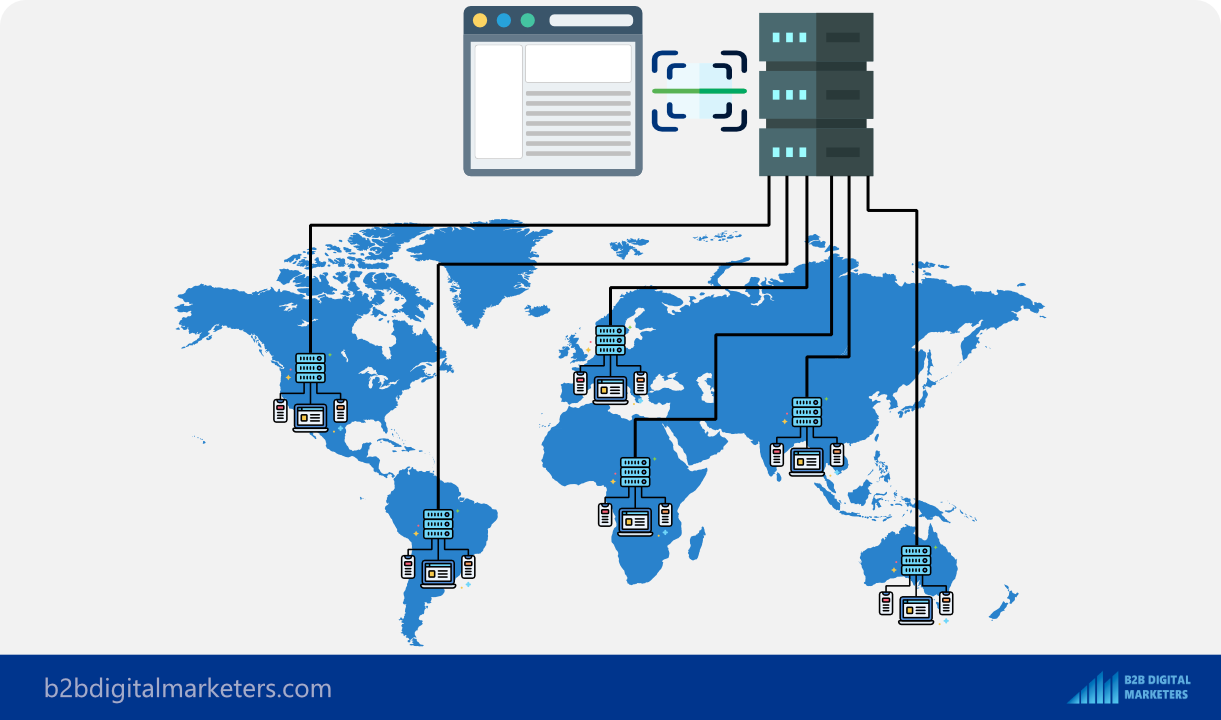
It also reduces the Webhosting bandwidth consumption by reducing the amount of data the origin server must provide, thus reducing hosting costs for website owners.
And CDN vendors like Cloudflare provide a feature that will serve a limited copy of your cached website to keep it online for your visitors in case your server went offline.
On top of that CDN improves the security of your website making it harder to hack your website and we both know that Google likes that.
Strategy #18: Implement Lazy Load Images
Another important aspect to improve page speed and core web vitals is to implement lazy load for images, videos, and other media on your website.
Lazy load allows loading images only when a user scrolls down the page, thus it helps you to improve your:
- Site performance
- Reduce bandwidth limit
- Optimize LCP score
- Improve Your overall Technical SEO

(Source)
A lazy load is especially important if you are utilizing a lot of media on your web page. For example, my typical blog posts contain over 50+ images, therefore, it is a must to implement a lazy load for me.

Strategy #19: Use Caching Plugin
Another important plugin I recommend you install for your website is caching plugin.
Caching plugins are essential for your website to load faster. It creates a static and compressed version of each web page so it can be faster delivered to users. It helps delete old data, lazyloads your pictures, optimizes your files, and does a whole bunch of things to make your website faster.
And then caching plugins are often integrated with CDNs to help transfer your speed optimized pages there to even more speed up your website.
Caching plugins are essential for websites to load fast, and you should get one for your website as well.
Now, depending on your CMS system, you will be using different caching plugins, some of the paid CMS systems like Wix and HubSpot are automatically cached and have the capabilities.
However, if you are using WordPress, then there are three most popular caching plugins which are:
- WP Rocket – The Best
- W3 Total Cache
- WP Super Cache
Each of these plugins is developed to work on WordPress sites and comes with its own pros and cons.
Therefore, as your website is growing, adding new pages, features, and plugins, your website will start to slow down. So, it’s really important to implement caching plugin for your website.
Strategy #20: Have Mobile-Friendly Pages
And the last important technical SEO strategy and also very important white hat SEO strategy is to have mobile-friendly pages.
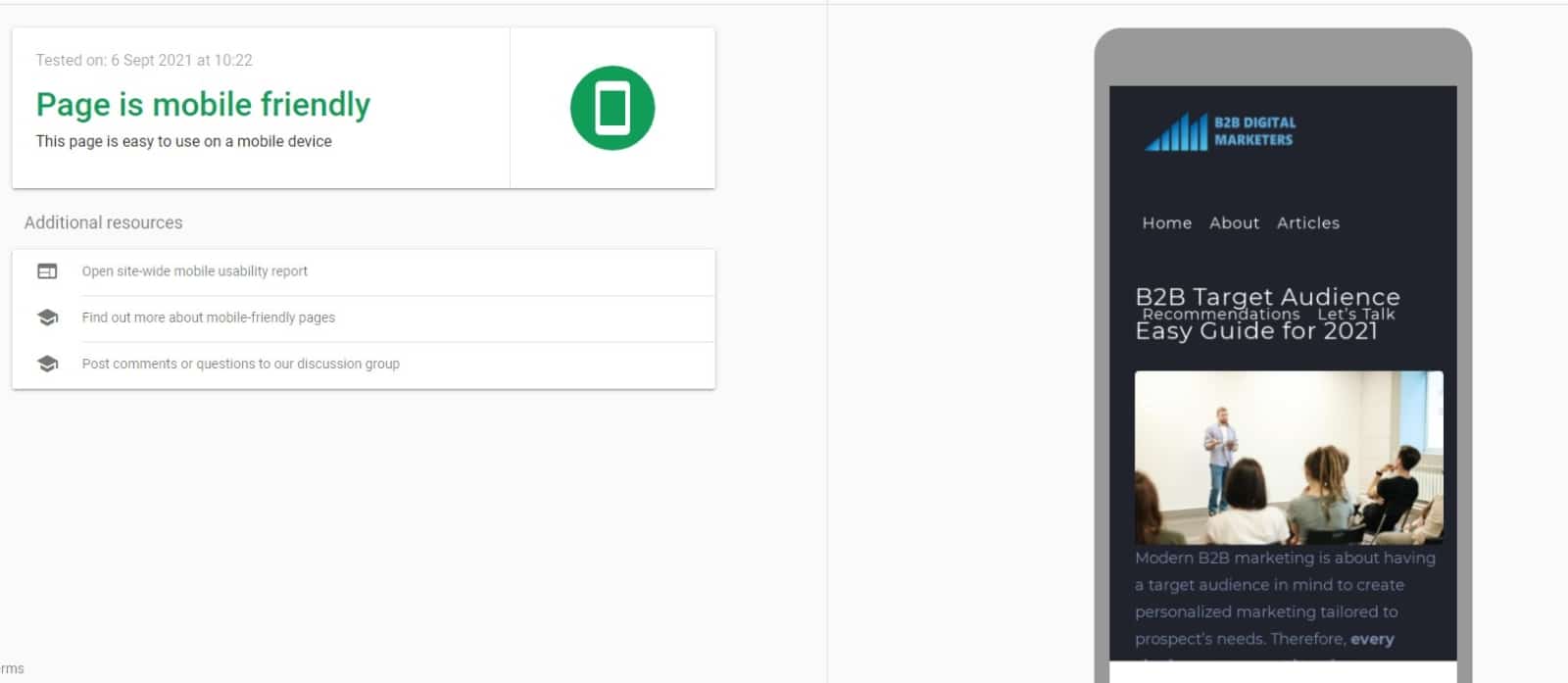
According to researches such as from Statista, mobile traffic is higher than desktop traffic since Q1 2017. This means if your website is not mobile-optimized, you are losing over half of the potential traffic you could drive.
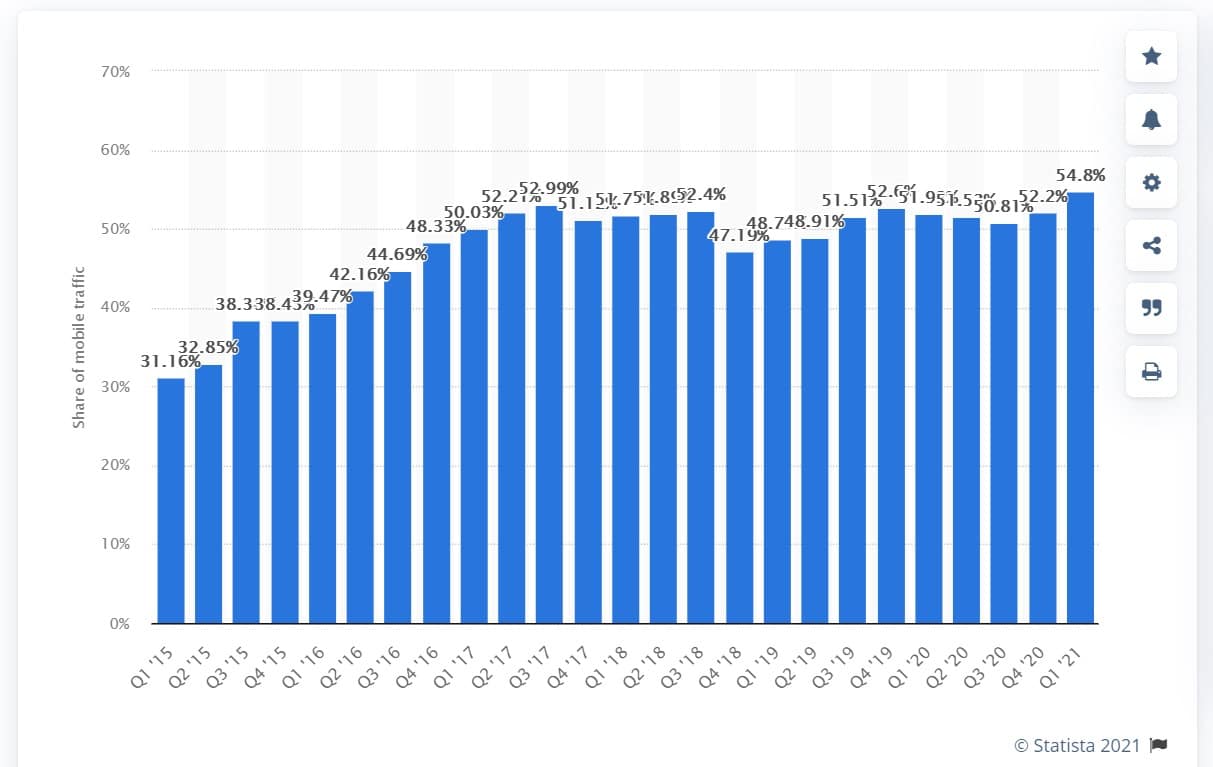
And this becomes even more significant for local searches as in the USA, 94% of people with smartphones search for local information on their phones. Interestingly, 77% of mobile searches occur at home or at work, places where desktop computers are likely to be present.
Thus, having mobile-optimized pages is essential for your SEO strategy.
And here you have the four important technical SEO strategies, so let’s move to the next step.
Step #6: Tracking Important SEO Metrics
The next important step in your SEO strategy is to measure important SEO metrics to figure out if you are doing great or you need to adjust your strategy.
As much as I would like, nothing goes as planned and every first plan is only a draft in action for the second plan to take place.
You must be prepared that something will not go as expected, you might find better keywords, new backlink opportunities, your writer left or just anything that can go wrong might go wrong.
Remember, as they say:
“Hope for the best, prepare for the worst.”
And also, they say:
“What can be measured, can be improved.”
Regardless, as an SEO professional, you must track your progress and adjust along the way to keep growing and improving your SEO results.
With that, let me share with you 4 important metrics you should track:
Metric #1: Keyword Rankings
Definitely the first and one of the most important metrics you want to track is your keyword rankings. Learn how to track keyword ranking.
Keywords are your foundation for SEO and tracking your keywords will give you important insights on how well your website is doing in SERPs and what you can improve to rank better.
You will get information like what keywords can be improved to increase organic traffic, why you are losing traffic, where your competitors are outranking you, and much more.
With such information, you can act on those keywords that truly matter to you and prevent losing traffic.
With that, to track your keywords, you can use your Google Search Console, go to your “Performance” report and select the “Queries” tab.

Here you will get your top 1,000 ranking keywords in the search that you can sort by the number of clicks, impressions, CTR, and average ranking position.
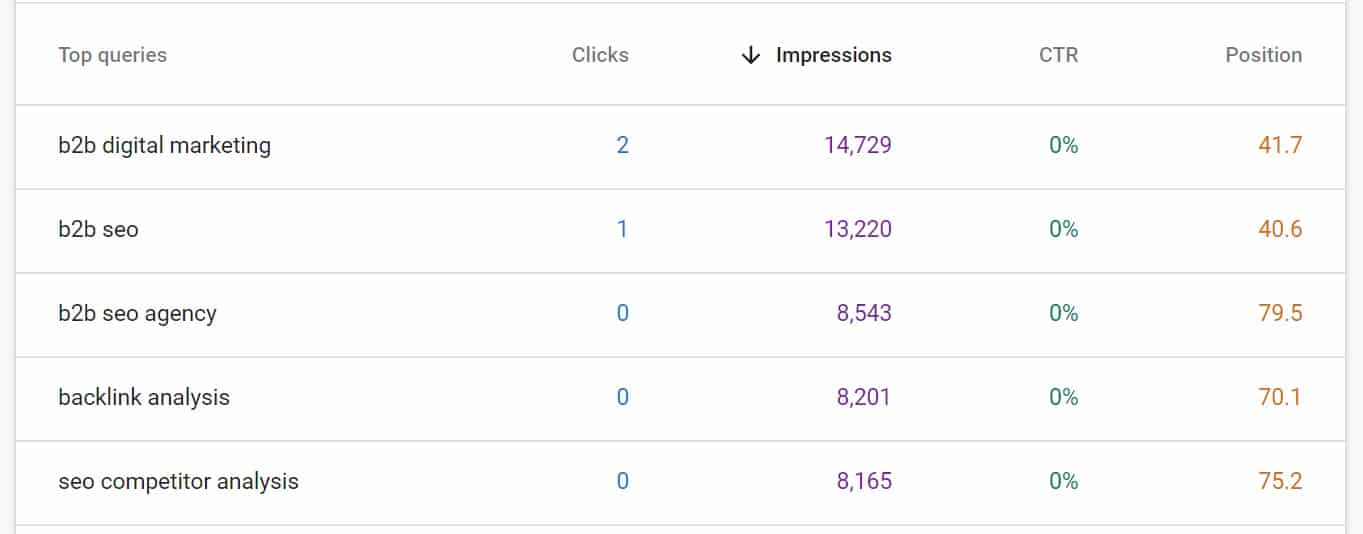
From here you can drill down to each individual keyword and select the location to see how it performs in your targeted location.

Or you can go to the “Pages” tab where you will see how your pages are performing in search.
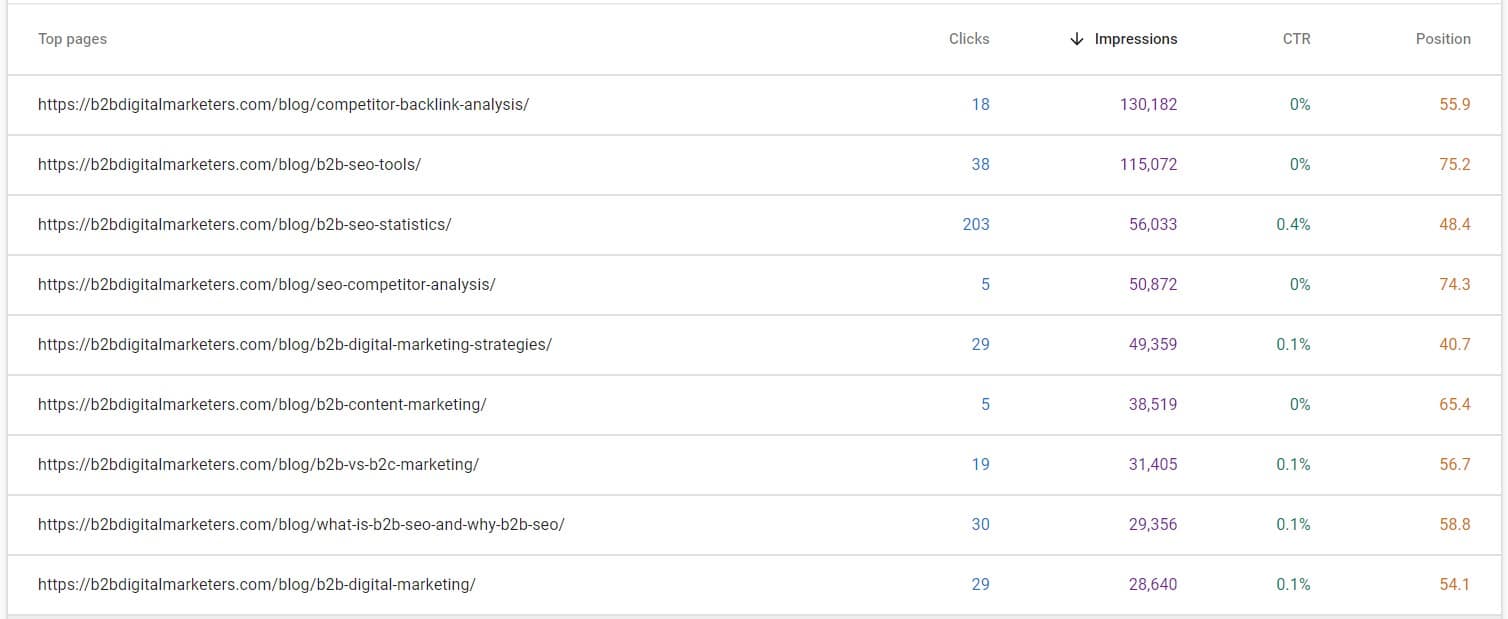
Then you can select your page and go back to the “Queries” tab to see all the keywords the page is ranking for in Google SERPs, from here you can use the country filter again.
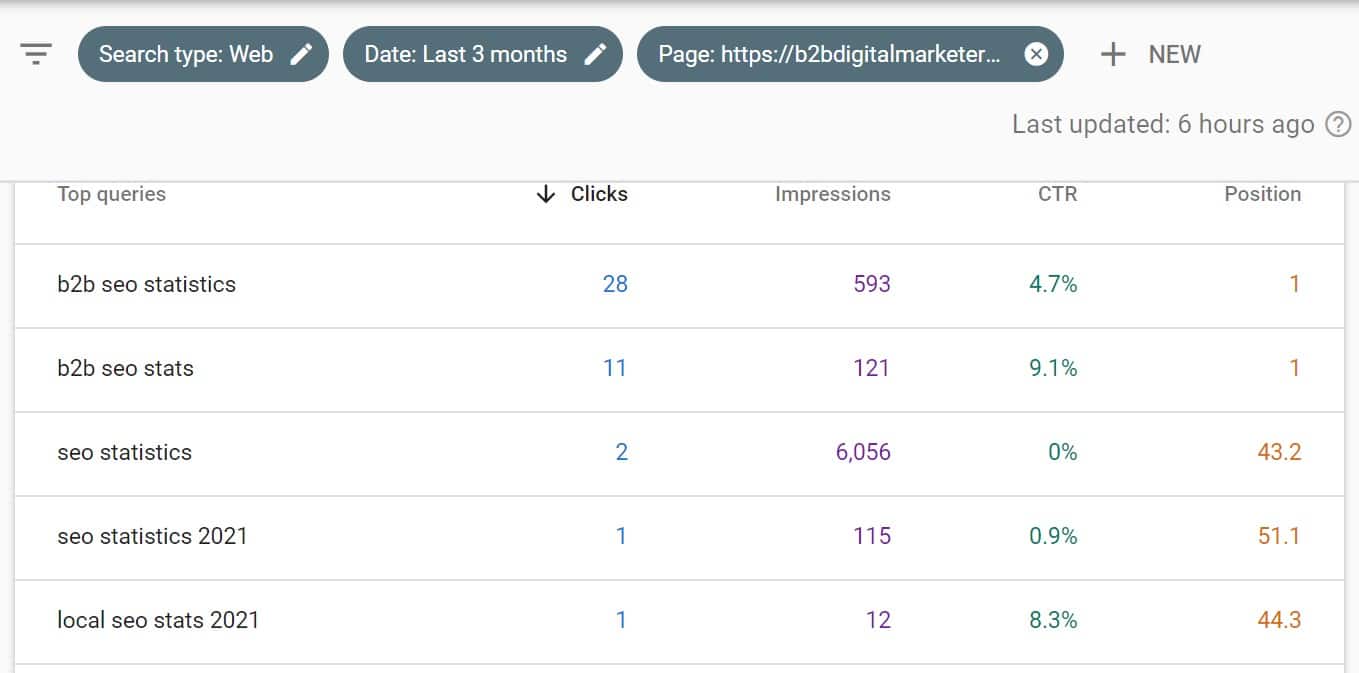
And there is so much more you can do with Google Search Console. However, this is more for granular research and not for day-to-day tracking and monitoring.
Therefore, I recommend you also use the keyword rank tracking tool.
Definitely one of the leading and in my opinion the best keyword rank tracking tool is SE Ranking that provides a 100% accurate keyword rank tracker across different search engines like Google, Bing, Yahoo, and YouTube for all locations and devices.
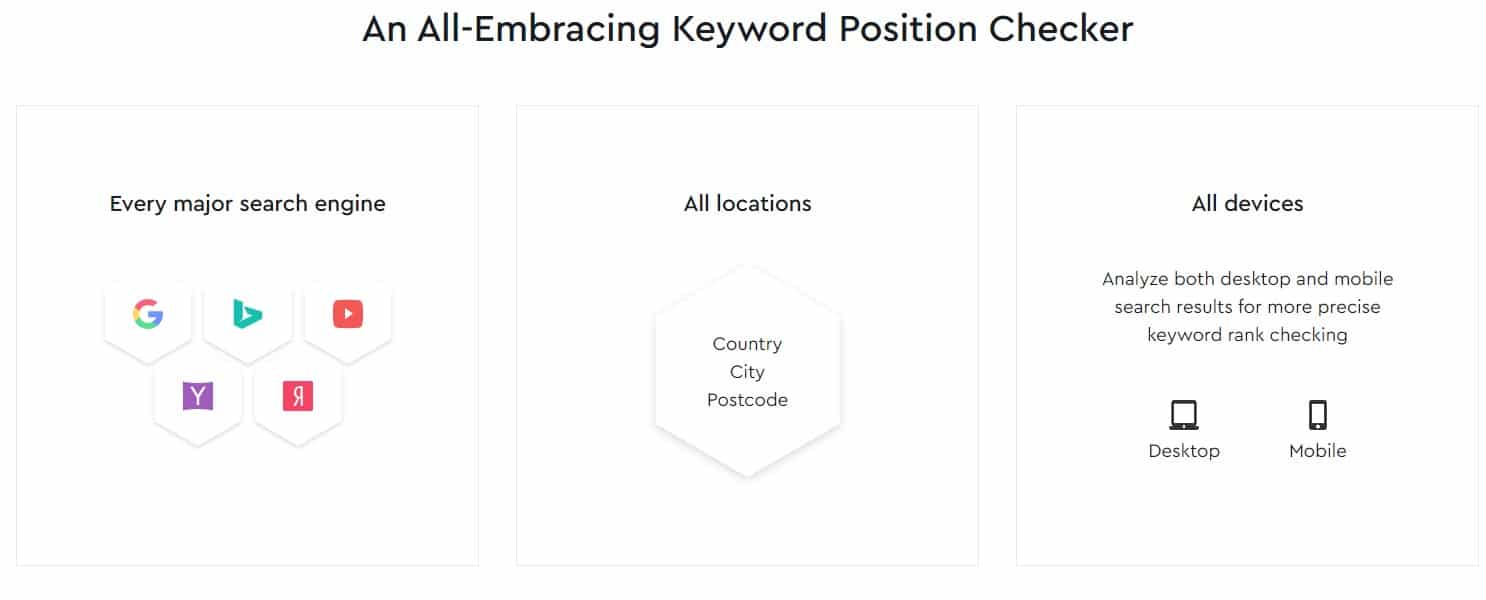
The tool gives you a quick overview of all your track keywords and their ranking position, and you can easily select the “position filter” to see only keywords that are ranking in that position.
Also, you will see the percentage of your keywords ranking in certain positions and the changes of keywords and the ranking positions.
On top of that you have the average position across all your track keywords, the traffic forecast, search visibility, the search features your keywords own, and how many % of your keywords rank in the top 10 for your targeted location.
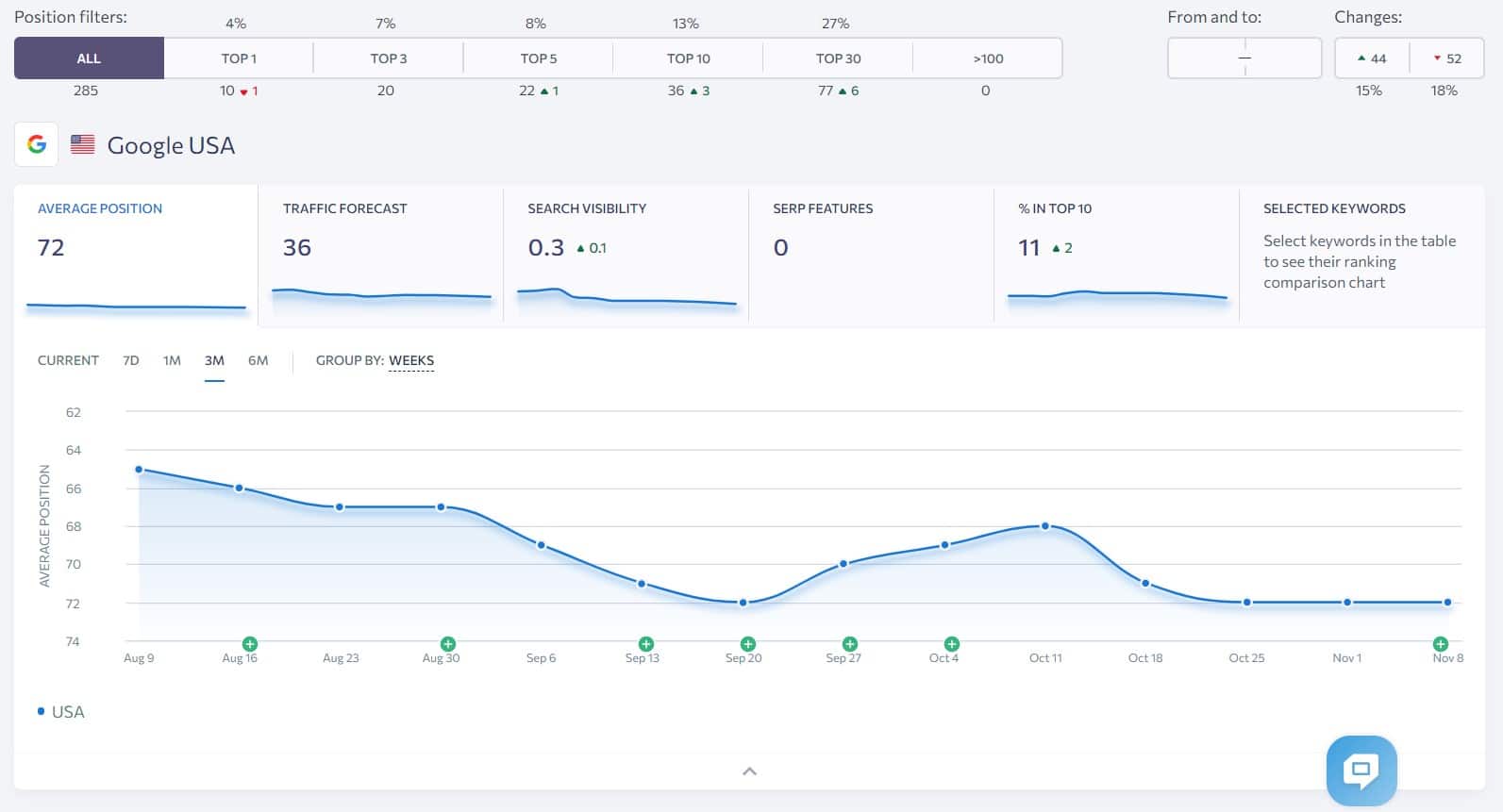
Then you have the table of your tracked keywords and their ranking position based on your selected location and/or device where you can see the movements of your keywords.
This gives you important information on whether it’s time to update your content for the targeted keyword, build more backlinks, etc.

And you can also select to display different columns for your keyword, for example, to see the search volume, SERP Features, Traffic forecast, and the visibility of your track keyword.
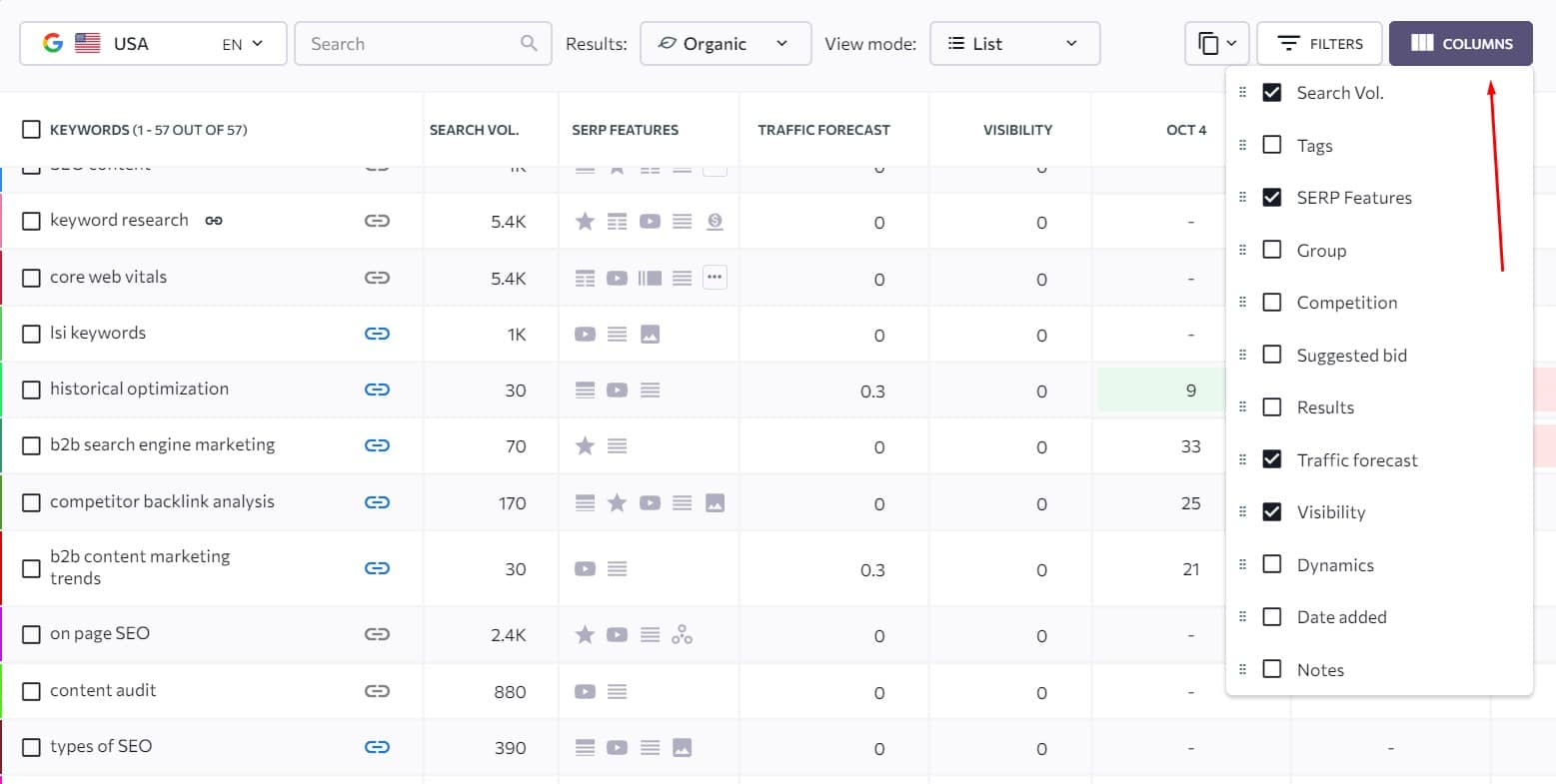
This will help you to prioritize the right keywords and give you essential insights so you can improve your ranking, increase organic traffic and take action before you lose your ranking.
Definitely using keyword rank tracking tools like SE Ranking is essential for your SEO strategy.
Metric #2: Backlinks
The second metric that you should track is your backlinks.
Backlinks are one of the most important ranking factors Google and other search engines are using to validate the quality of a website, as stated on their website:
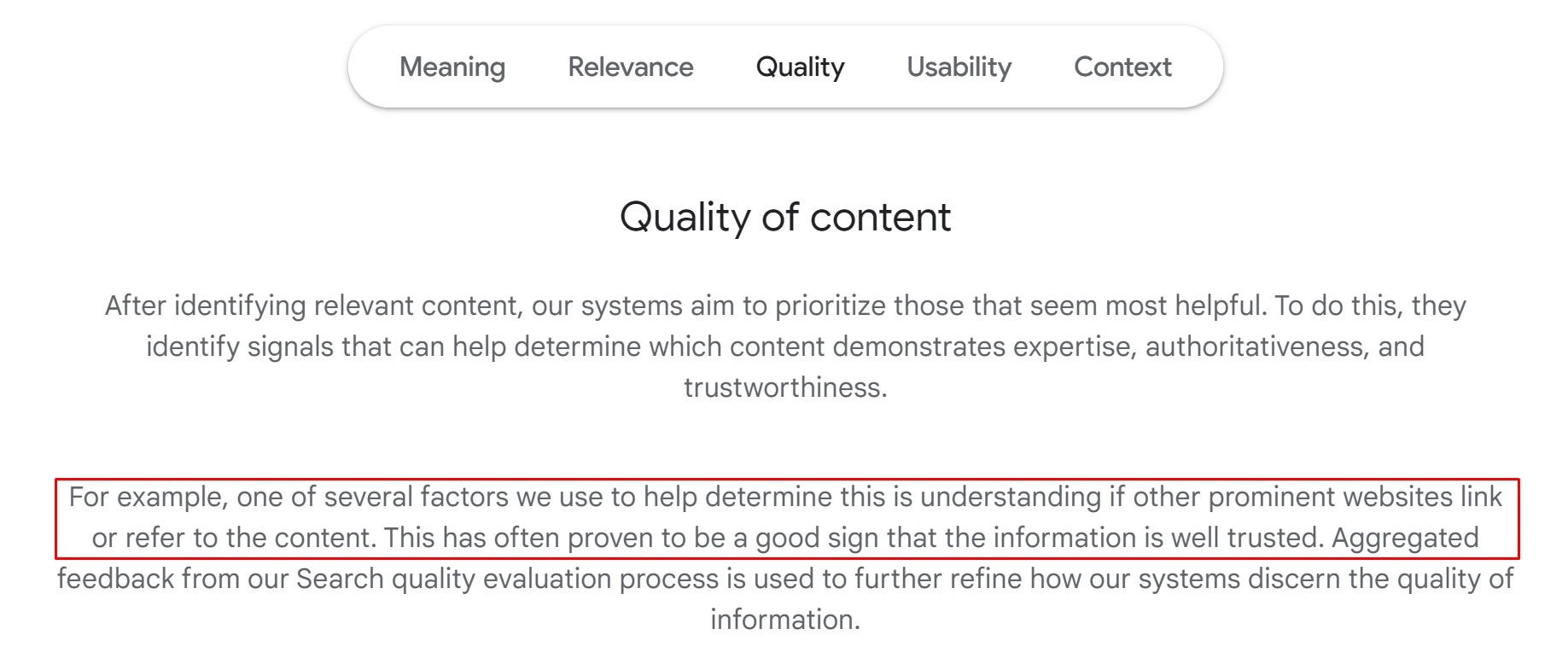
In the end, SEO in its basic form is just content for targeting keywords and backlinks to build trust. Therefore, tracking your backlinks should be an important part of your SEO tracking routine.
And to track your backlinks you need to use a tool. Now, because I am using SE Ranking, they have this feature as well and for me, it is the most user-friendly with great design and capabilities.
SE Ranking Backlink Monitor gives you important information about your backlink profile such as the:
- Backlink URL
- Status of the backlink
- Whether it is indexed
- Domain Trust
- Anchor Text,
- Targeted URL
- Type of Backlink
- Country

Plus, you can integrate your Google Search Console to track all your backlinks that Google discovers, to easily analyze your backlinks, the growth of your backlinks, and even detect whether your website is being spammed and quickly disavow those backlinks.
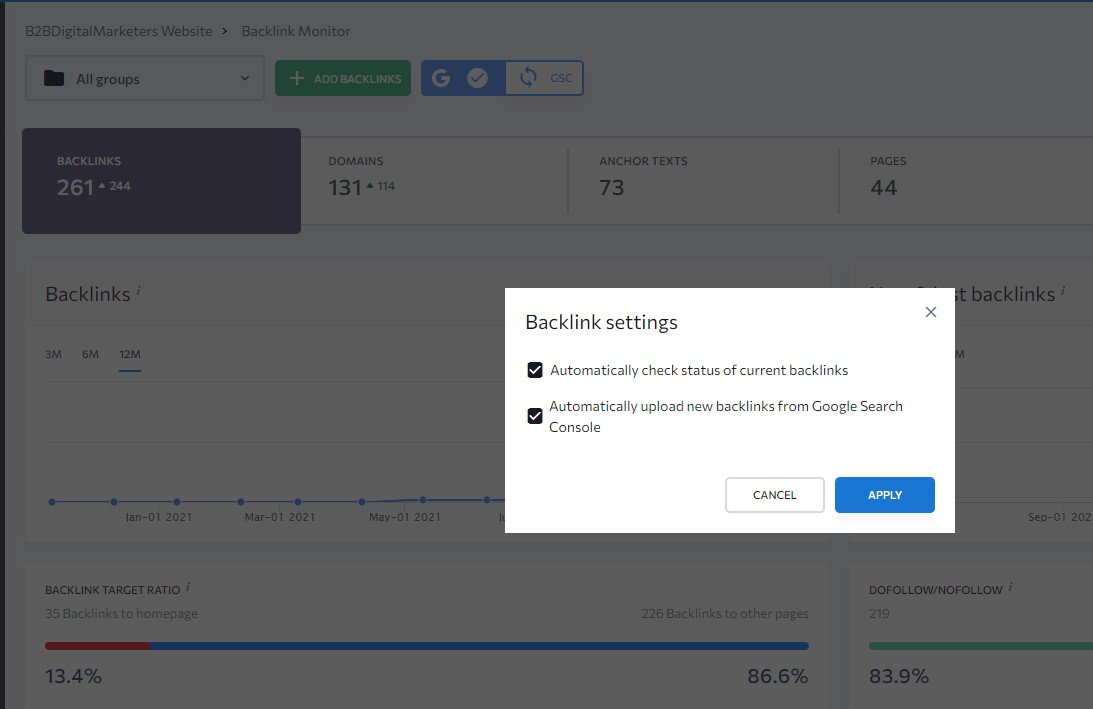
Also, you can easily track your link building campaign by adding the price, manager, and/or note to every backlink you build, so if in the future your backlink gets removed, you can easily follow up without searching lost emails.
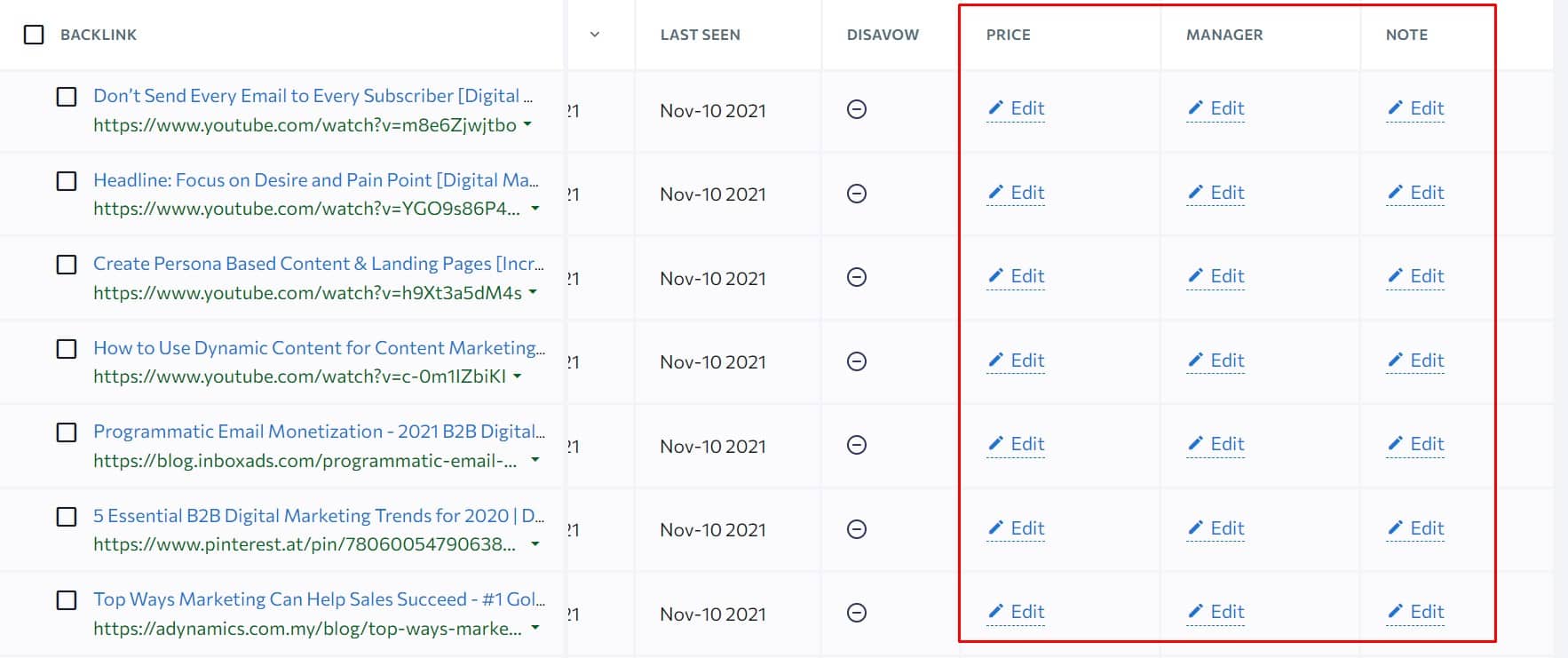
SE Ranking Backlink Monitor is literally the savior for my link building campaigns, the anchor optimization, and ensuring my backlink profile is looking natural and healthy without raising any suspicion.
So, if you are starting your link building campaign, then having a backlink monitoring tool like SE Ranking is something you need to save time and money.
Metric #3: Organic CTR
The third metric that you should measure is your organic CTR.
Organic CTR is one of the most important metrics that you should track on a regular basis as it tells you whether your page is doing well in SERPs based on user response.
Google uses organic CTR to evaluate the results quality and websites that exceed the expected CTR will be promoted in the SEPRS for the query and those with lower organic CTR will be ranked lower.
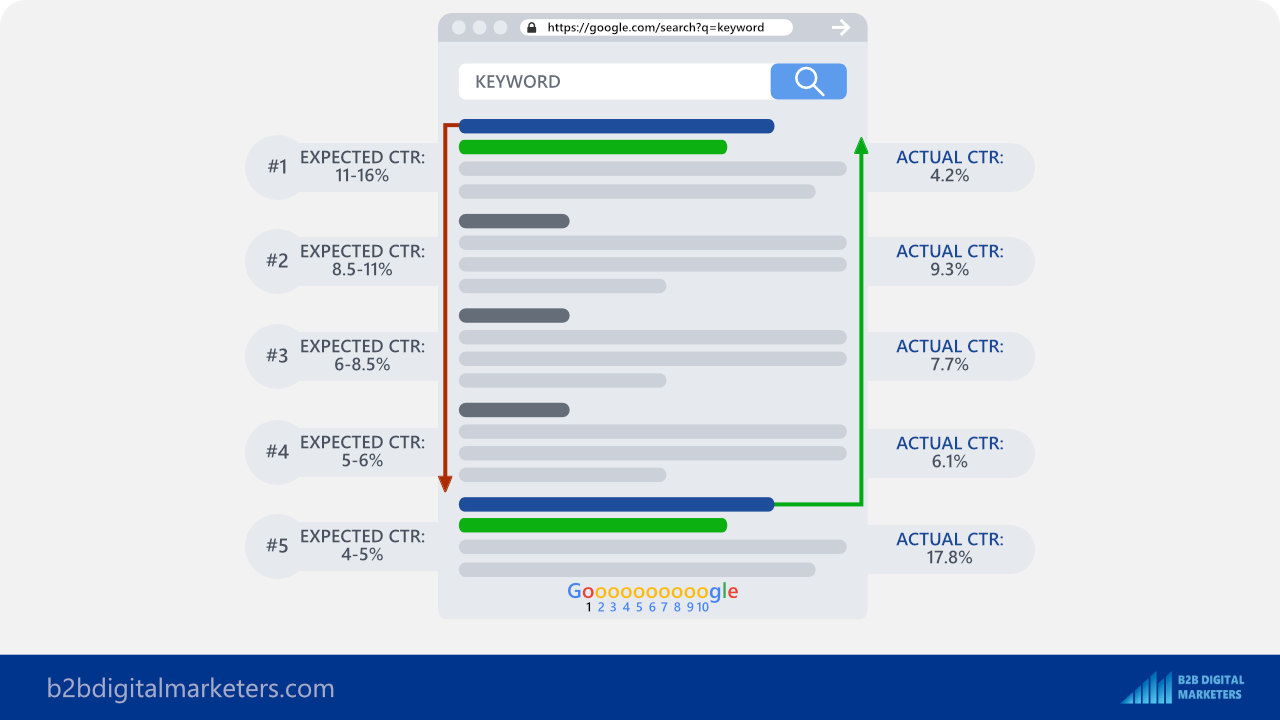
So, the best tool to track and improve organic CTR and with that your organic traffic and your ranking is Google Search Console as it gives you data as it is from Google SERPs for your ranking queries.
So, to improve your organic CTR, one of the best techniques is to go to your Google Search Console and select the performance data.
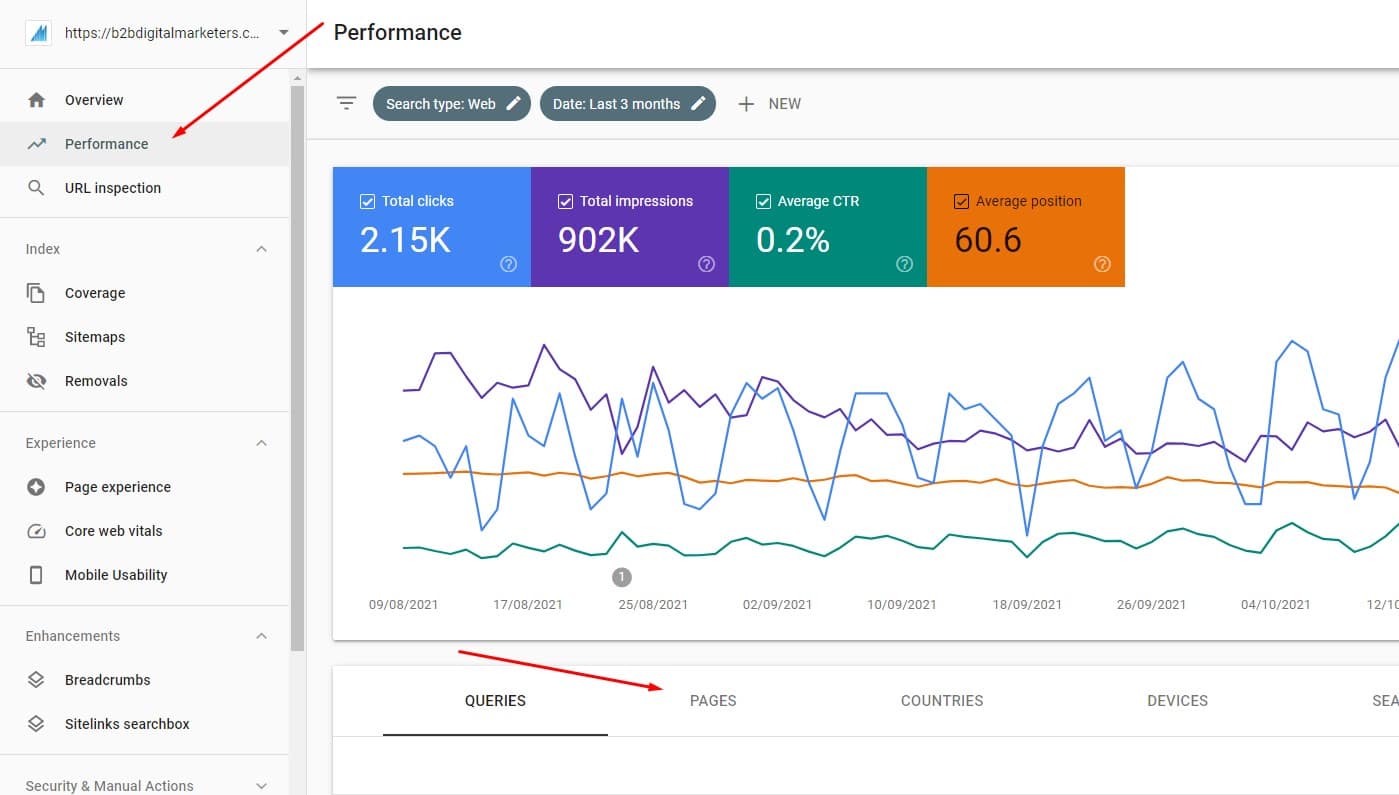
Then go to the “Pages” report, and select one of your pages that is doing ok in SERPs, but has some room for improvements, and go back to the “Queries” report. For example, for me, this could be the page on B2B SEO Tools.
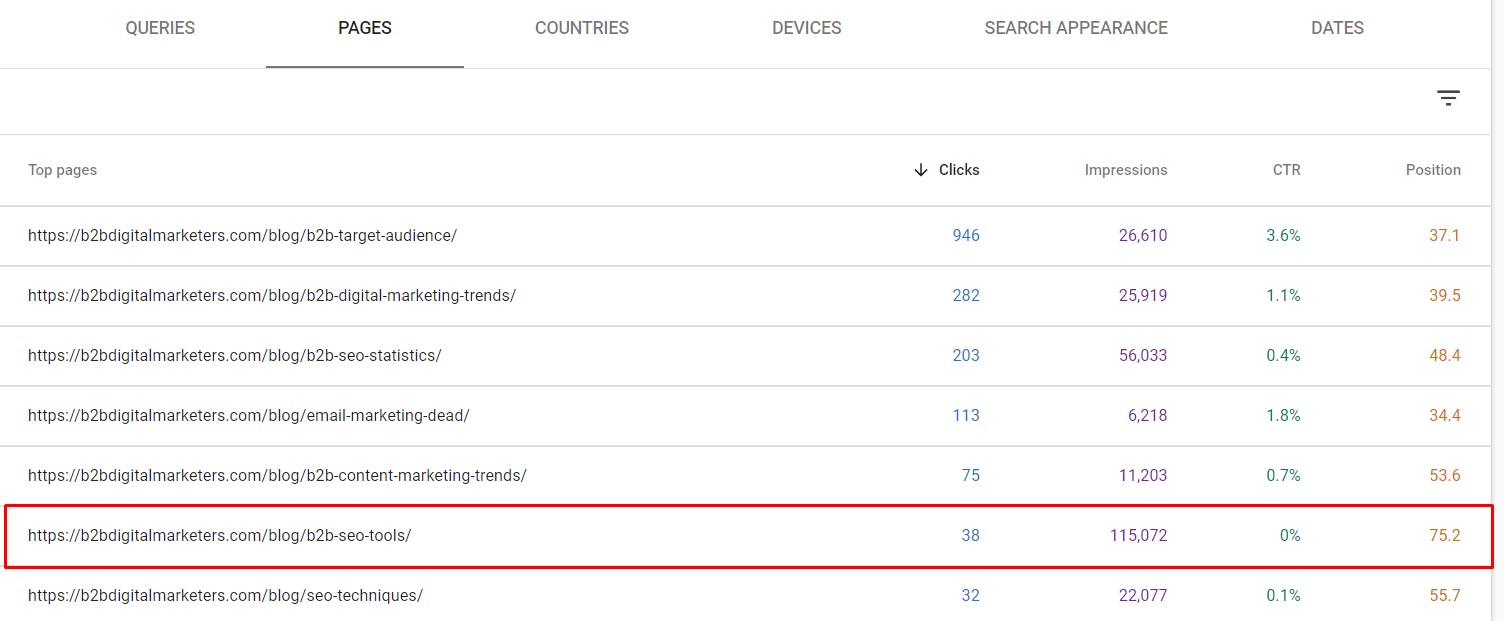
Now based on the report I am seeing the page ranked for a lot of irrelevant keywords, however ranks quite well for my targeted keyword.
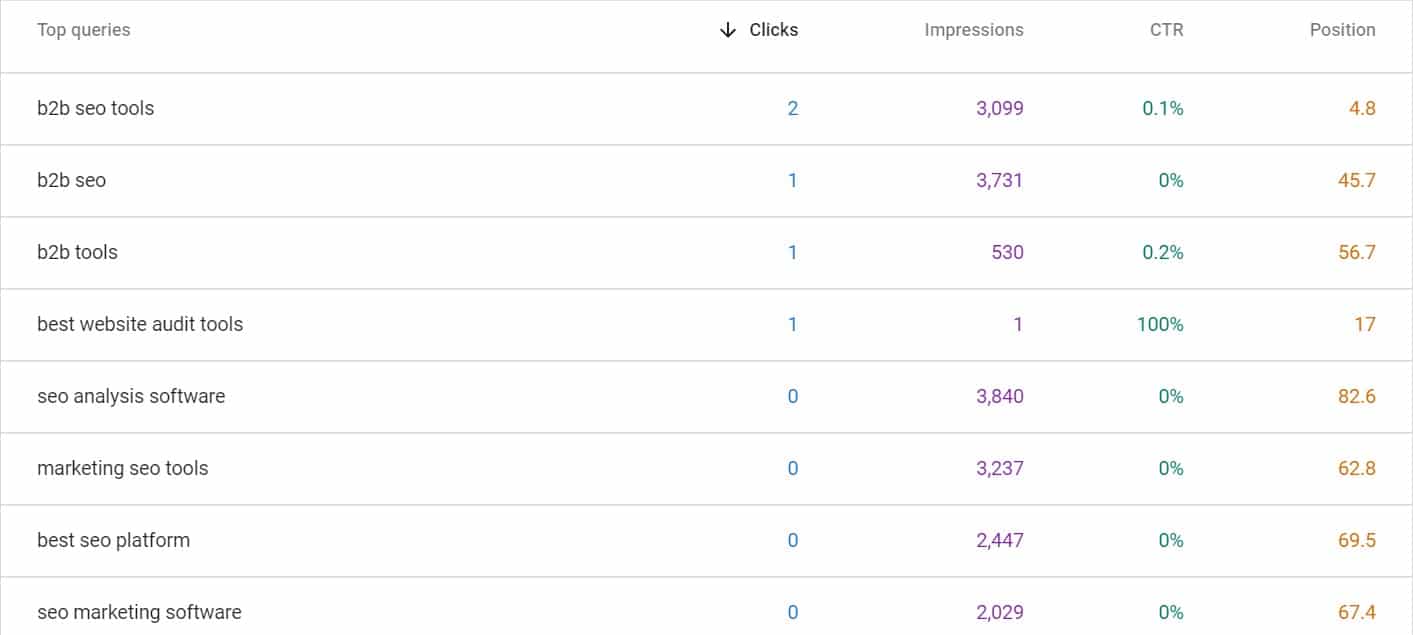
Now, based on the data I can see that the page is ranking in position #2 in SERPs, but the CTR is really poor.

And some keywords can have a great ranking, but poor CTR because they can appear as a featured snippet. But for this keyword I know, this is a buyer intent keyword and usually, such keyword has a high CTR.
Therefore, I know I have done something wrong, and I should fix it by applying using some of the organic CTR best practices.
So, analyzing your CTR can be one of the best ways to improve your organic traffic and ranking almost instantly, and tracking it is worthwhile!
Also, the more of your pages meets or exceeds the organic CTR the more likely you are to appear in a higher ranking position for other keywords and pages and not just for this particular page.
Metric #4: Organic Traffic
And the last important metric that you should definitely track is your organic traffic as that’s one of the most important reasons why you are starting with SEO strategy and launching an SEO campaign.

Obviously, growing your organic traffic is one of the main goals you are trying to achieve with SEO strategy, therefore it is kind of obvious you should be tracking it by using Google Analytics.
And unlike Google Search Console, where the clicks data are approximate, Google Analytics gives you the exact number of your organic traffic.
And not only that, but Google Analytics can be a great source of insights on how to improve your SEO results. However, because it gots so many features, I recommend you go to the Google Analytics Academy to learn how to properly use this tool.
But, remember, organic traffic doesn’t pay the bills and just increasing your organic traffic doesn’t mean you become flooded with leads and sales.
It all comes down to understanding your target audience, meeting the search intent, and having keywords across all stages of the buyer journey.
Step #7: Continues SEO Strategy Updates
Alright, and the last step is to make sure everything is nice and tight, and nothing got loose.
When it comes to SEO, there is no such thing, creating it and forgetting it. It requires continuous effort to ensure everything is updated, you have no errors on your website, your articles are up to date and your website is looking nice and healthy.
So in this step, I am going to share with you three common SEO strategies to keep your website up to date without any errors and provide your users with the best user experience.
Strategy #21: Keep Updating Your Internal Links
The first SEO strategy that you will need to keep up to date and many found annoying is your internal linking.
Internal links are one of the most important ranking factors that you have total control over to influence the ranking of your most important pages.
Google uses internal links in many different ways.
Way #1: Google is using internal links as a primary source to crawl and discover your pages and the entire internet as already mentioned. That’s why having optimal site architecture and an internal linking strategy are essential for your website.
Way #2: Google is using internal links to better understand your pages by looking at the anchor text.
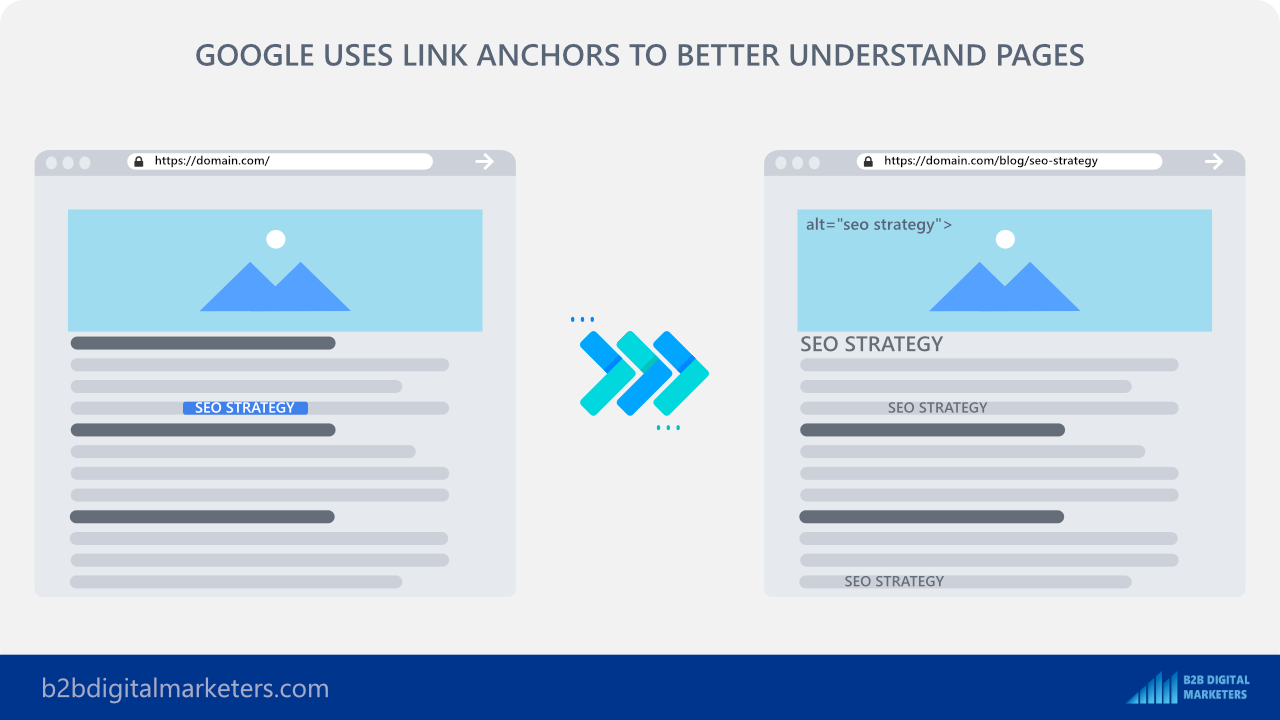
Way #3: Google is using internal links to understand the importance of the page. The more internal pages linking to a particular page, the more authority Google gives the page.
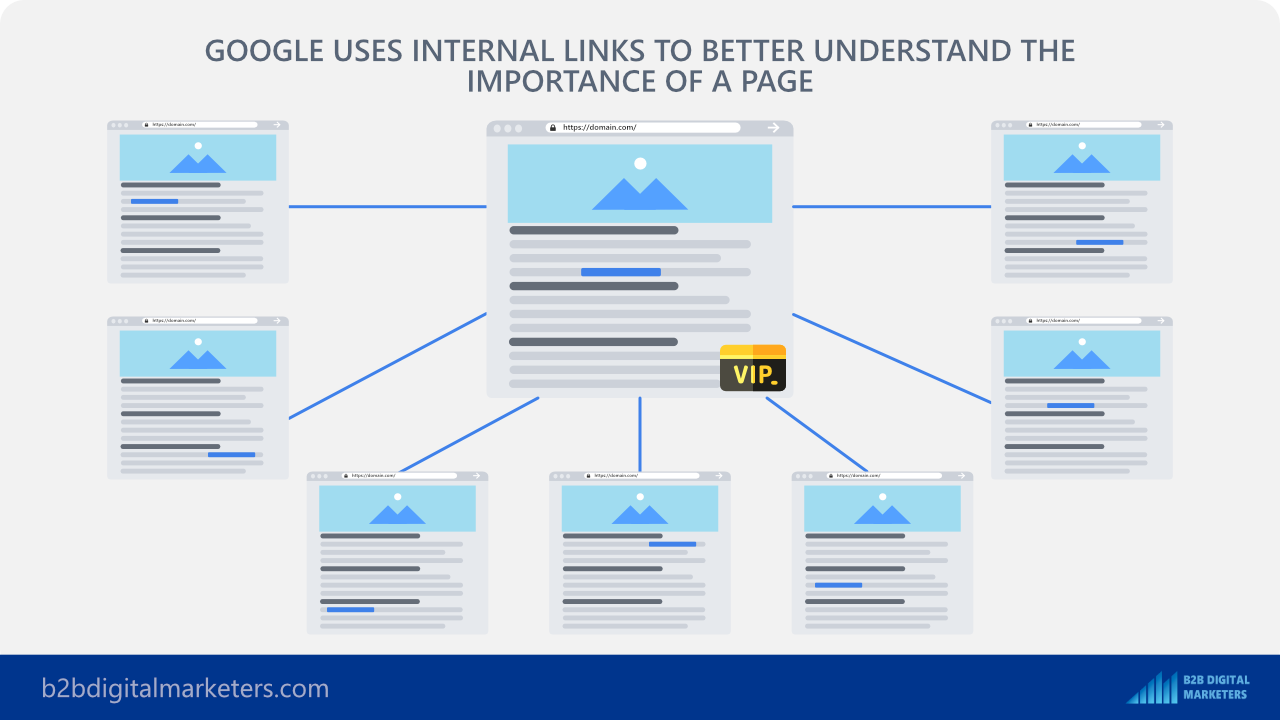
Way #4: And lastly and most importantly, Google passes PageRank via internal links, which means more link juice and better ranking for those linked pages.

Therefore, you should continually update your internal links to ensure your old pages and new pages are getting the boost from your website authority.
Also, focus on your product pages as like this you can improve the ranking for your money pages and drive more leads or sales for your business.
Strategy #22: Regularly Perform Historical Optimization
The next and very important SEO strategy that you should perform on regular basis is historical optimization.
Historical optimization strategy means updating old content on your website to increase organic traffic and ranking.
And arguably it is one of the most efficient strategies marketers can use to drive high organic traffic and leads for their business. 51% of companies say updating old content has proven the most efficient tactic implemented.
And if you want to get on the top of the search results you must start updating your old content to keep it fresh and up to date. Because according to Ahrefs research, the average Top10 ranking page is 2+ years old. And those that rank at position #1 are almost 3 years old (on average).

But Historical Optimization strategy is overlooked by many marketers and unfortunately, only 38% of bloggers are updating older articles. So, don’t be one of those, and make sure you regularly update your content.
So, to learn how to update your old content you can watch my video here:
Strategy #23: Monitor SEO Issues & Website Health
And the last SEO strategy I have for you that you should do on regular basis is to monitor your SEO issues and website health.
Along the way, as you keep adding content, do updates, redesigns and as your website grows, there will be some SEO issues appearing and if not fixed it could hurt your SEO performance such as ranking and organic traffic.
Therefore, it is essential to ensure you keep your website health good.
Now, to keep your website health optimal you need to use an SEO audit tool, that scans each and every page on your website and search for SEO issues as it’s impossible to do it manually.
And there are a lot of tools, but if you have already subscribed to one, then there is a chance the tool already comes with a website audit.
If you didn’t, then I recommend you test SE Ranking for 14 days for free, as you can execute your entire SEO strategy with the tool and a lot more and they offer by far the best value for money starting at the just US $25 a month.
SE Ranking Website Audit tool helps you to monitor every page on your website against 120 parameters that impact SEO and reveal if your site has any issues.

It shows you your overall health score, I recommend keeping it above 80. It also gives you issue distributed by category and by severity as well.
SE Ranking Website Audit tool gives you Core Web Vitals data once you have enough data, it shows you the depth of each page, where recommended depth is between 0-4, and gives you a whole bunch of information to keep your website nice and healthy.
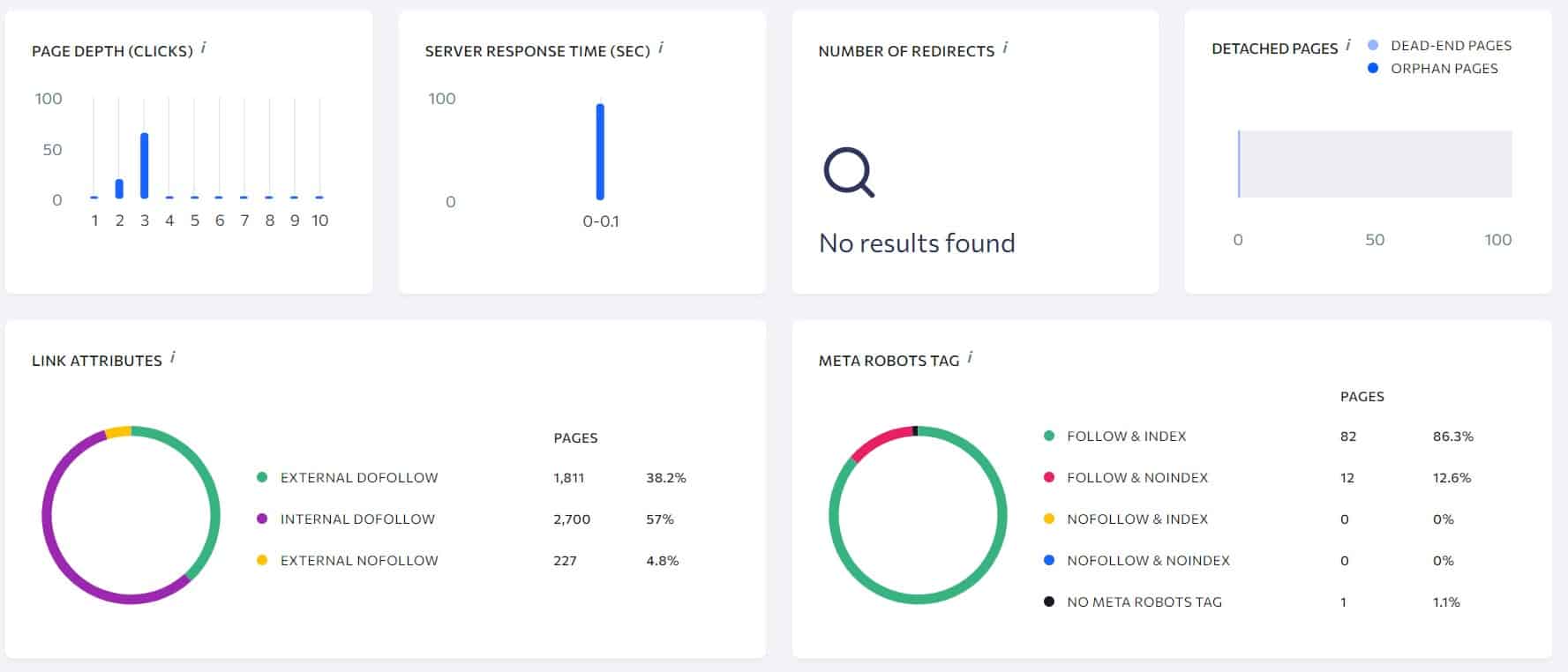
And within the “Issue Report” you can easily focus on the most important SEO issues by using quick filters and a sidebar menu to navigate.
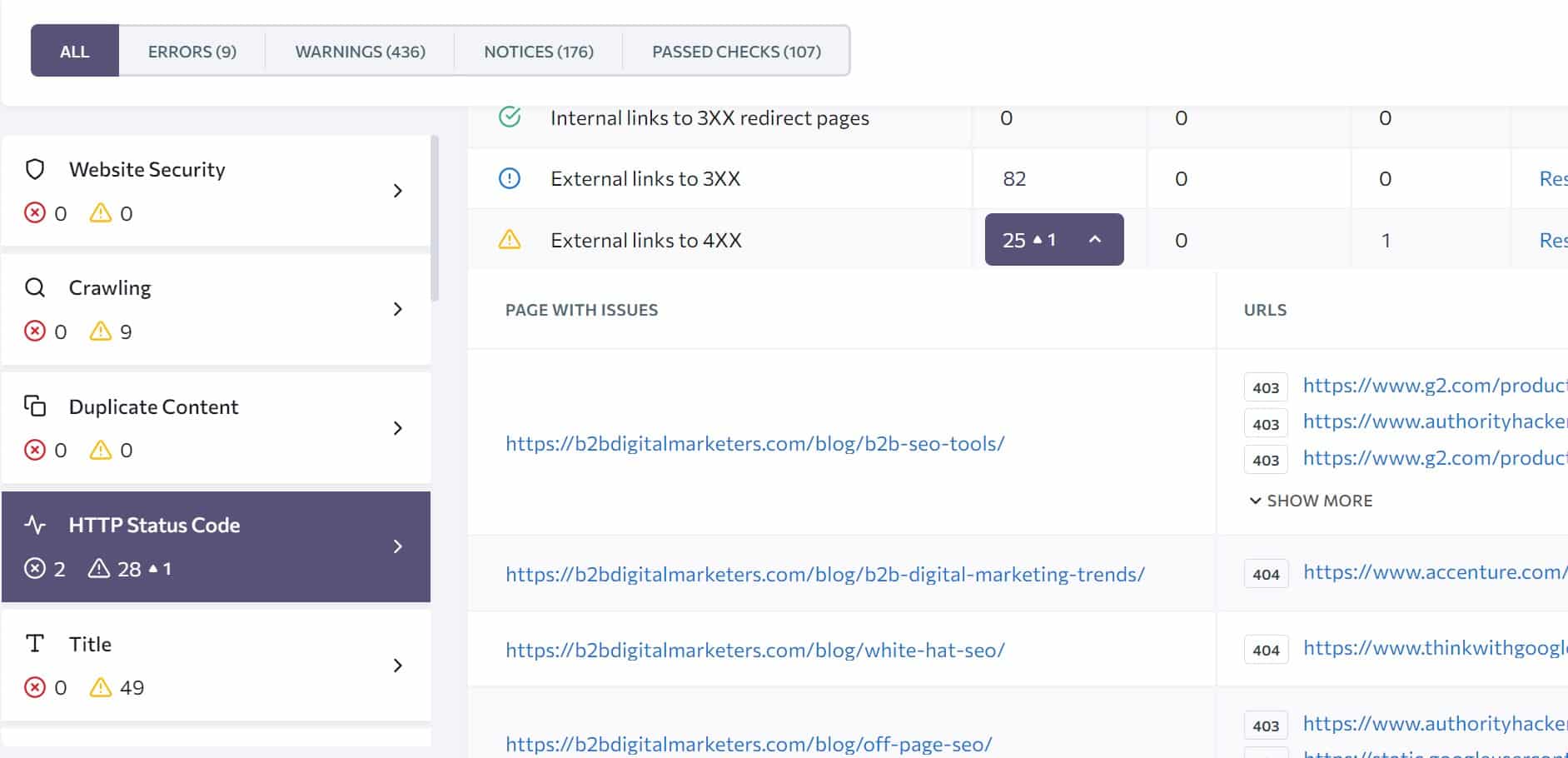
And it helps you to fix your SEO mistakes by giving you the issue description and how to fix it along with the pages with issues. Pretty straightforward.
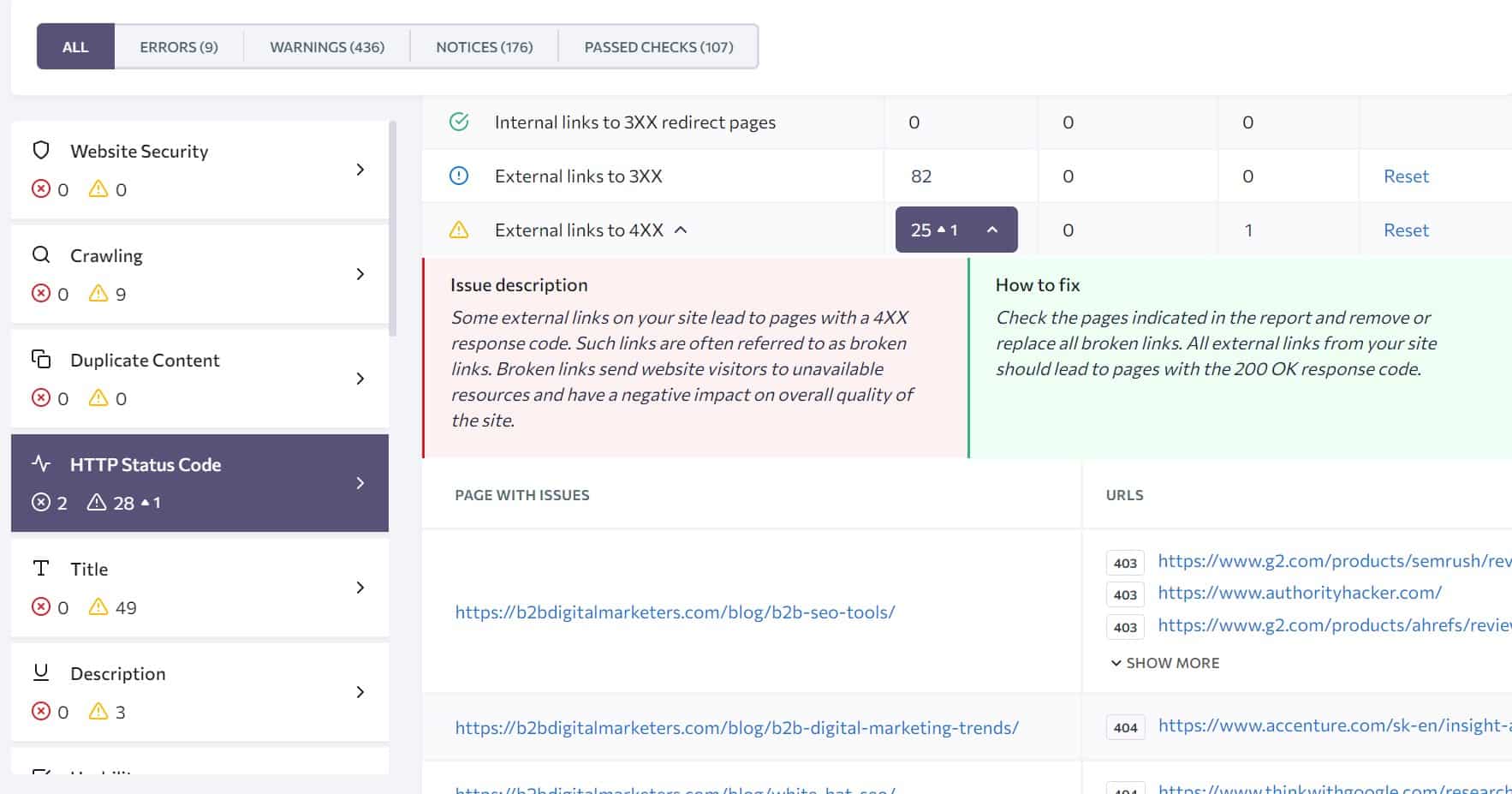
So make sure you run your website audit on regular basis to prevent any SEO issues hurting your site performance, ranking, and growth.
Final Advice
If you want to succeed with SEO, you must have a proper SEO strategy plan in place, without that you are only guessing which rarely works.’
However, remember nothing is written in the stone! Each and every step should stay fluid enough so you can update your plan.
For example, you find new keywords or topic cluster that seems like a great opportunity, then you should grab that if you are sure.
If you have a new and better way to approach your link building campaign, then make sure you can quickly adapt your SEO strategy to not lose out on opportunities.
But also remember, jumping from one opportunity to another is not good as well. Your SEO Strategy needs to lay a solid foundation as well.
Therefore, if you need to pivot your strategy, make sure you know what you doing, otherwise, you end up winging it just like not having a plan.
Related Articles:
- SEO Competitor Analysis: How to Beat SEO Competitors [+Template]
- Most Important SEO Techniques to Drive Traffic & Leads
- How to Do a Content Audit for B2B Website? To Increase Organic Traffic, Leads & Ranking
- Link Building for SaaS: The Ultimate Guide to Start With
- What is B2B SEO and Why Do you Need SEO for B2B?
- How To Do Keyword Analysis for Website in SEO
- How To Check Website Position in Google
Also, check out our SEO hub page to find all our SEO resources.
Disclaimer
Some pictures are coming from Freepik and some of my links are affiliate links, which means if you purchase something, I might get some small commission as a reward for reference. Of course, I am actively using all these services and products, and I only affiliate products or services I have full trust in their quality!
Support the B2BDigitalMarketers
Hey, Eduard here.
As a solo blogger with limited resources, I need your support to keep creating in-depth SEO content like this. Please consider joining my Patreon community to help this site grow.
Your pledge – no matter how small – will enable me to dedicate more time to sharing actionable tips and strategies. With your help, I can take this project to the next level and really make a difference for other SEOs and marketers.
I would sincerely appreciate you joining me on this journey as a founding patron. Together, we can build an amazing resource hub. Hope to see you on the inside – thanks for your trust and support!








